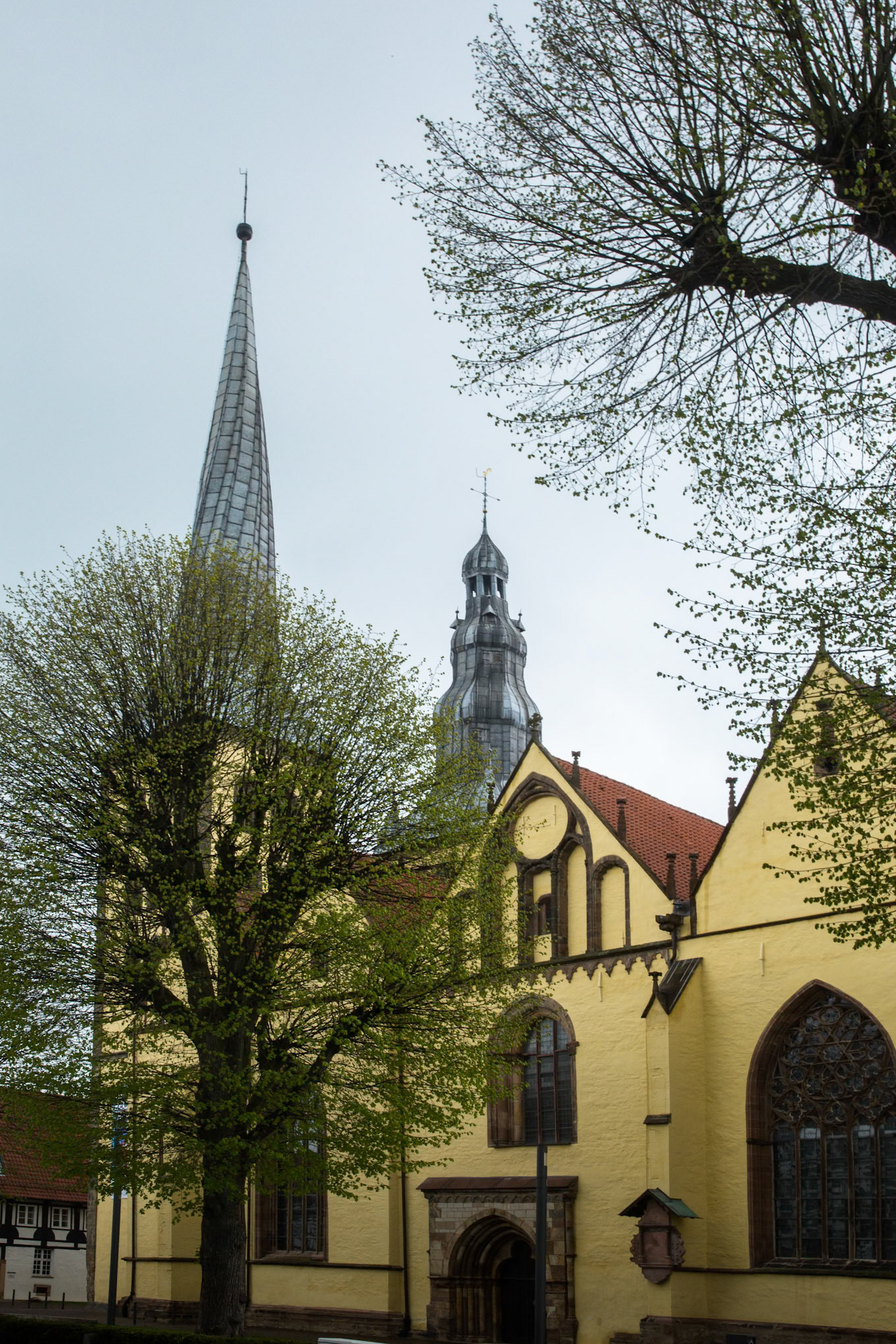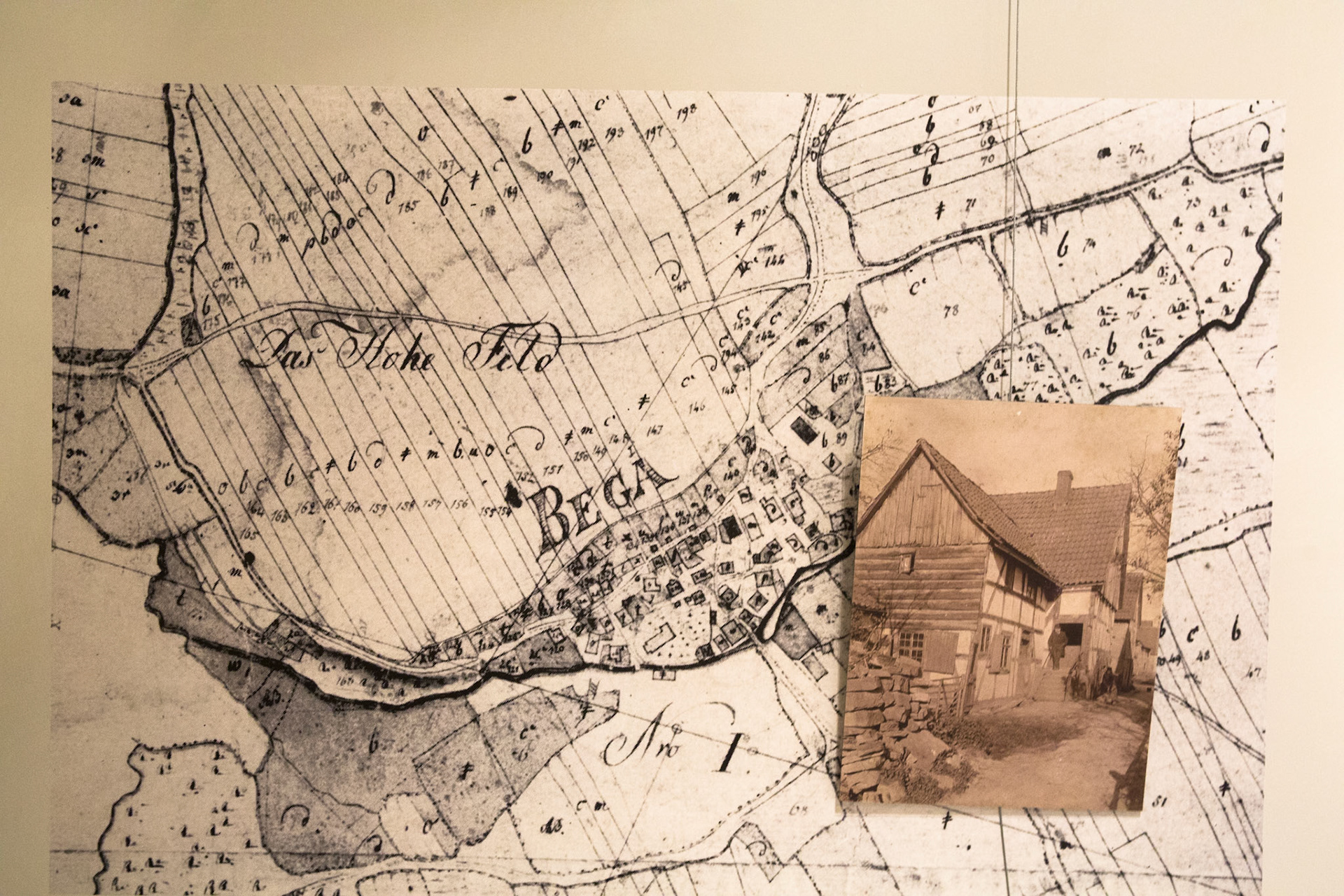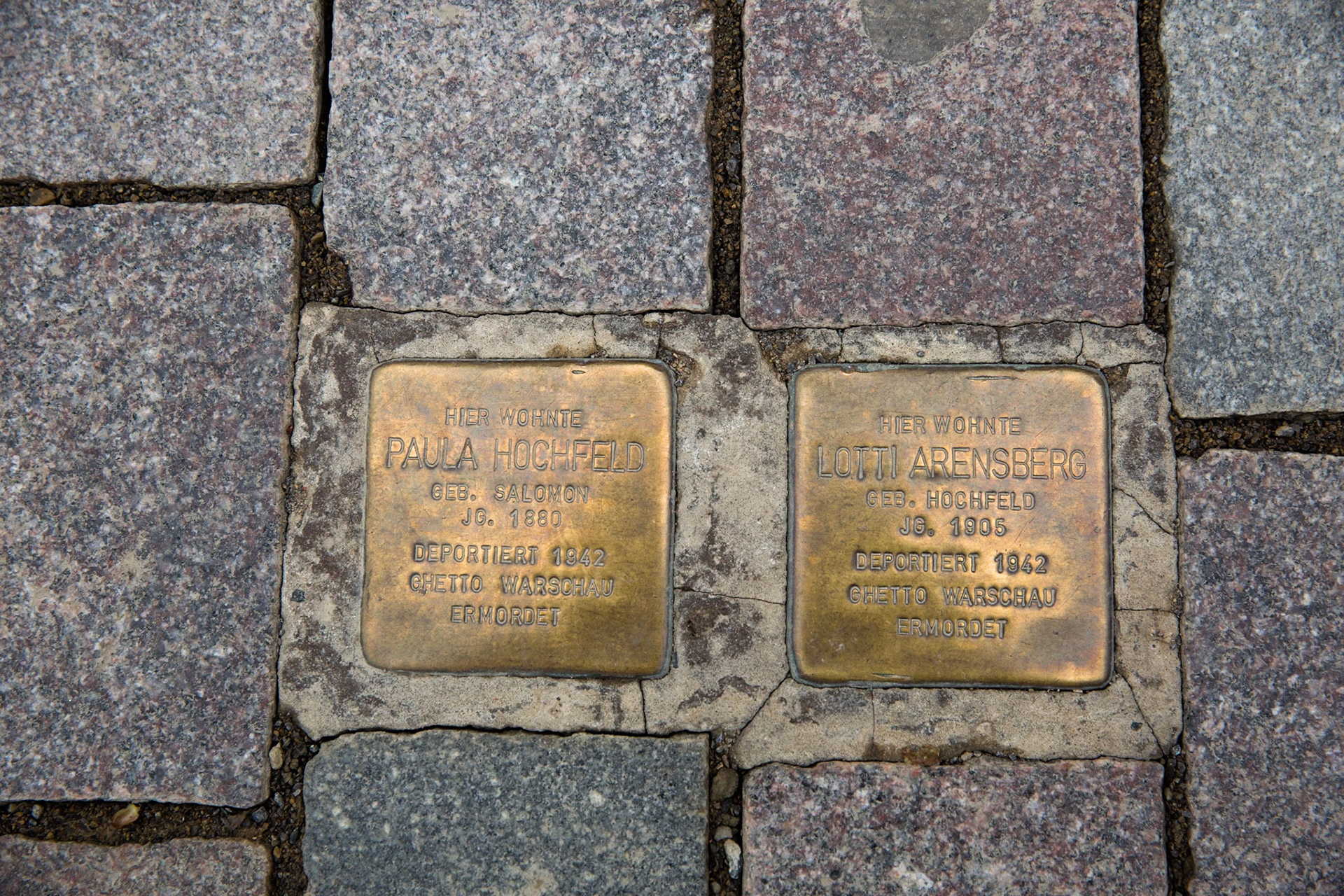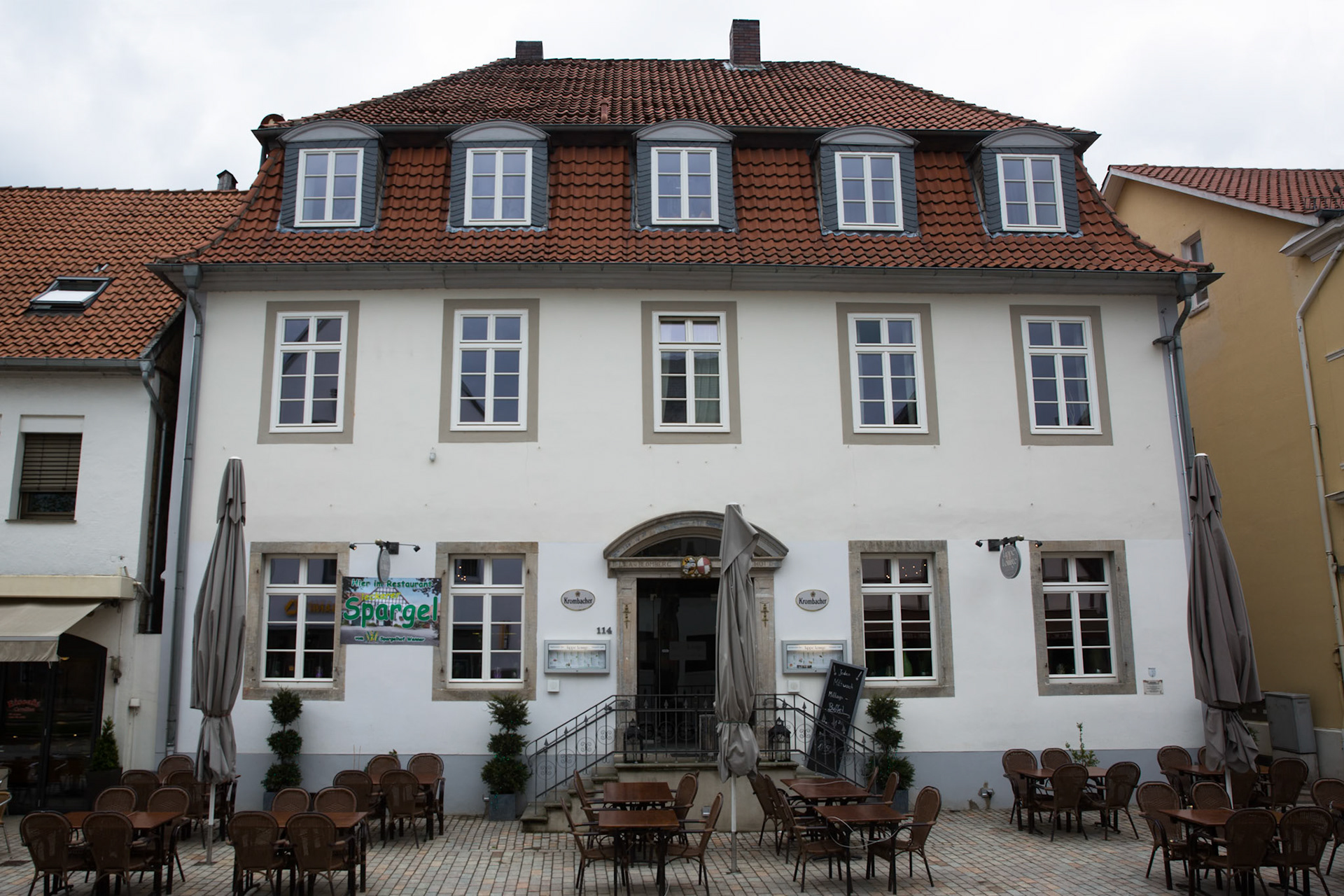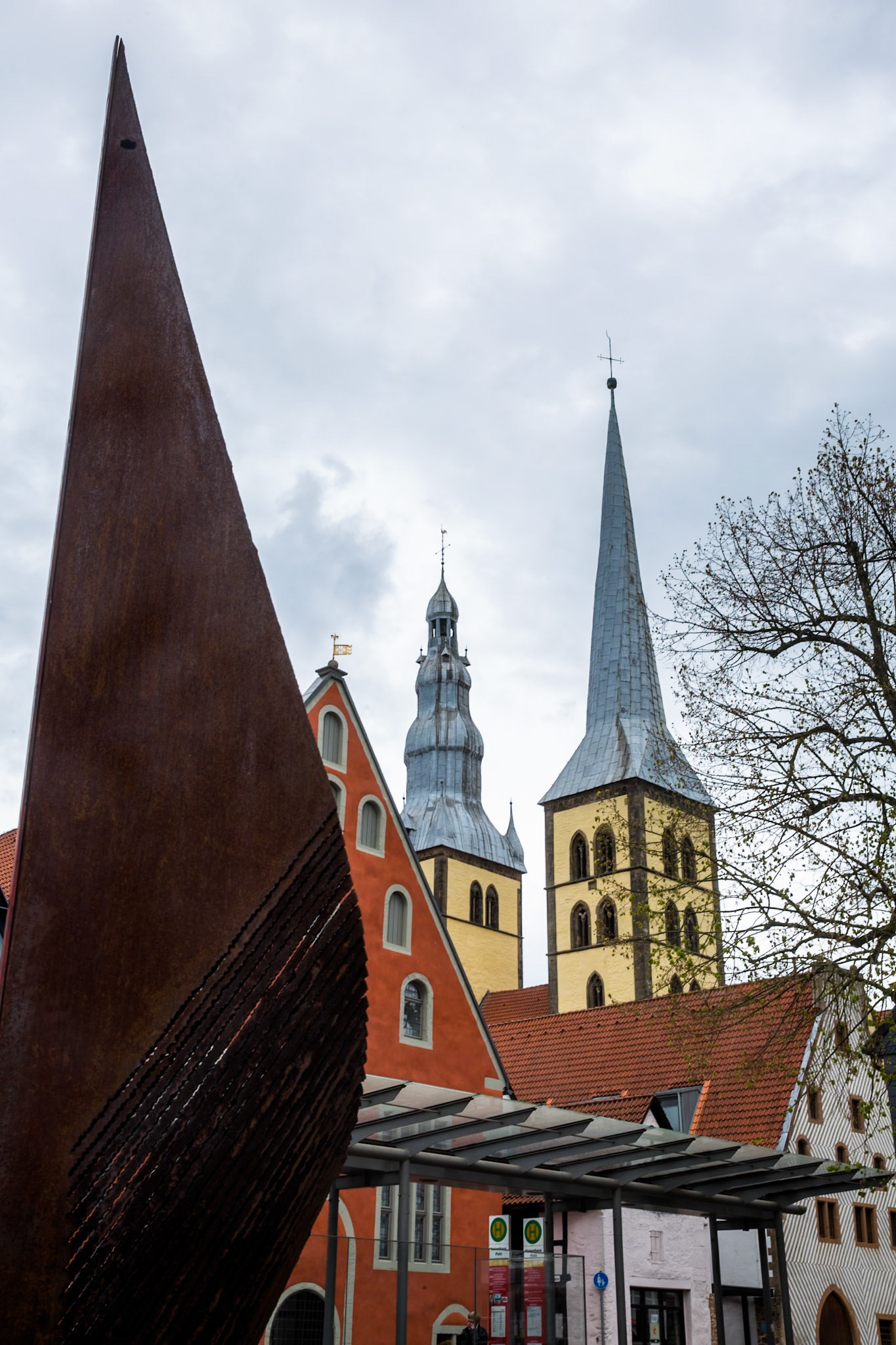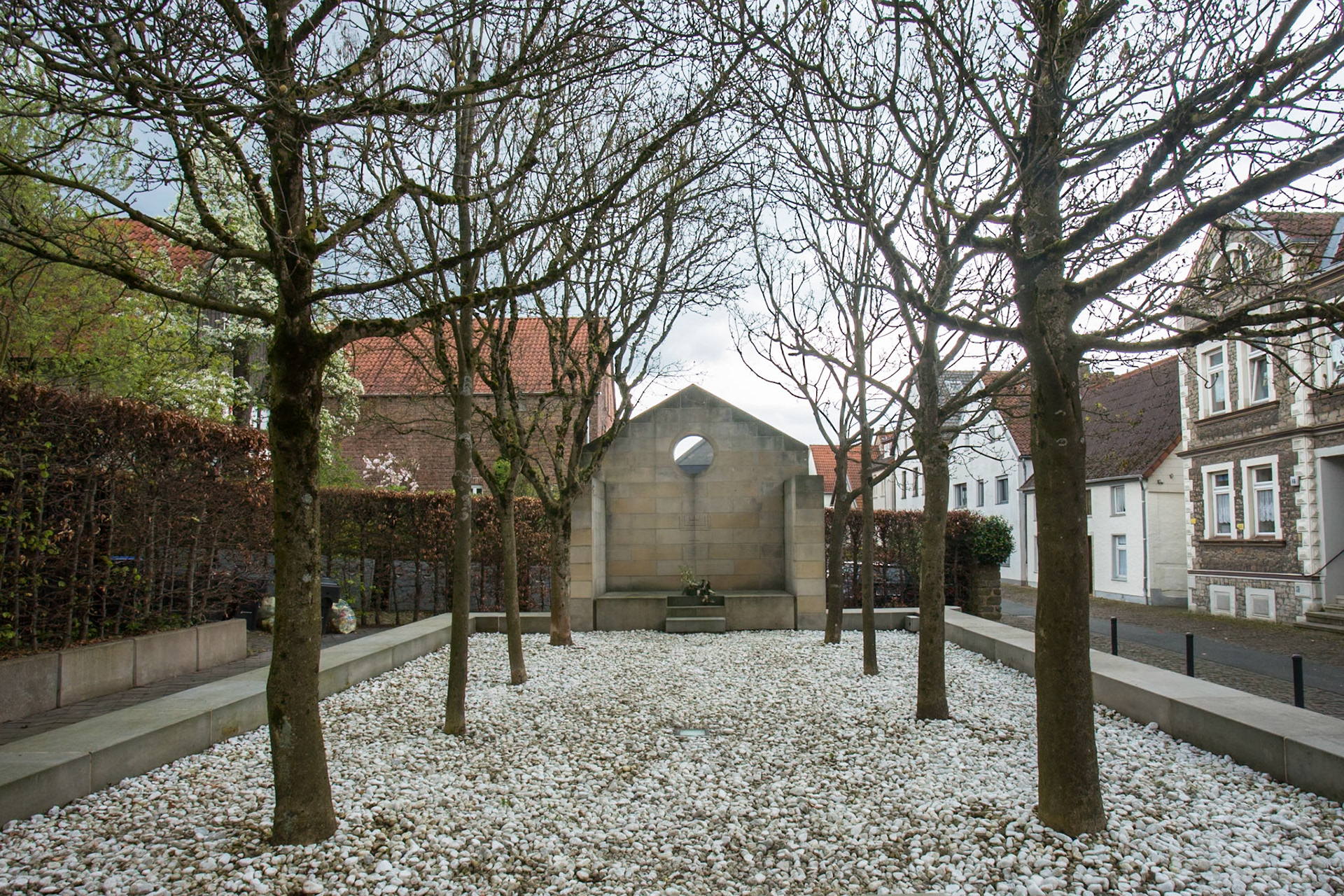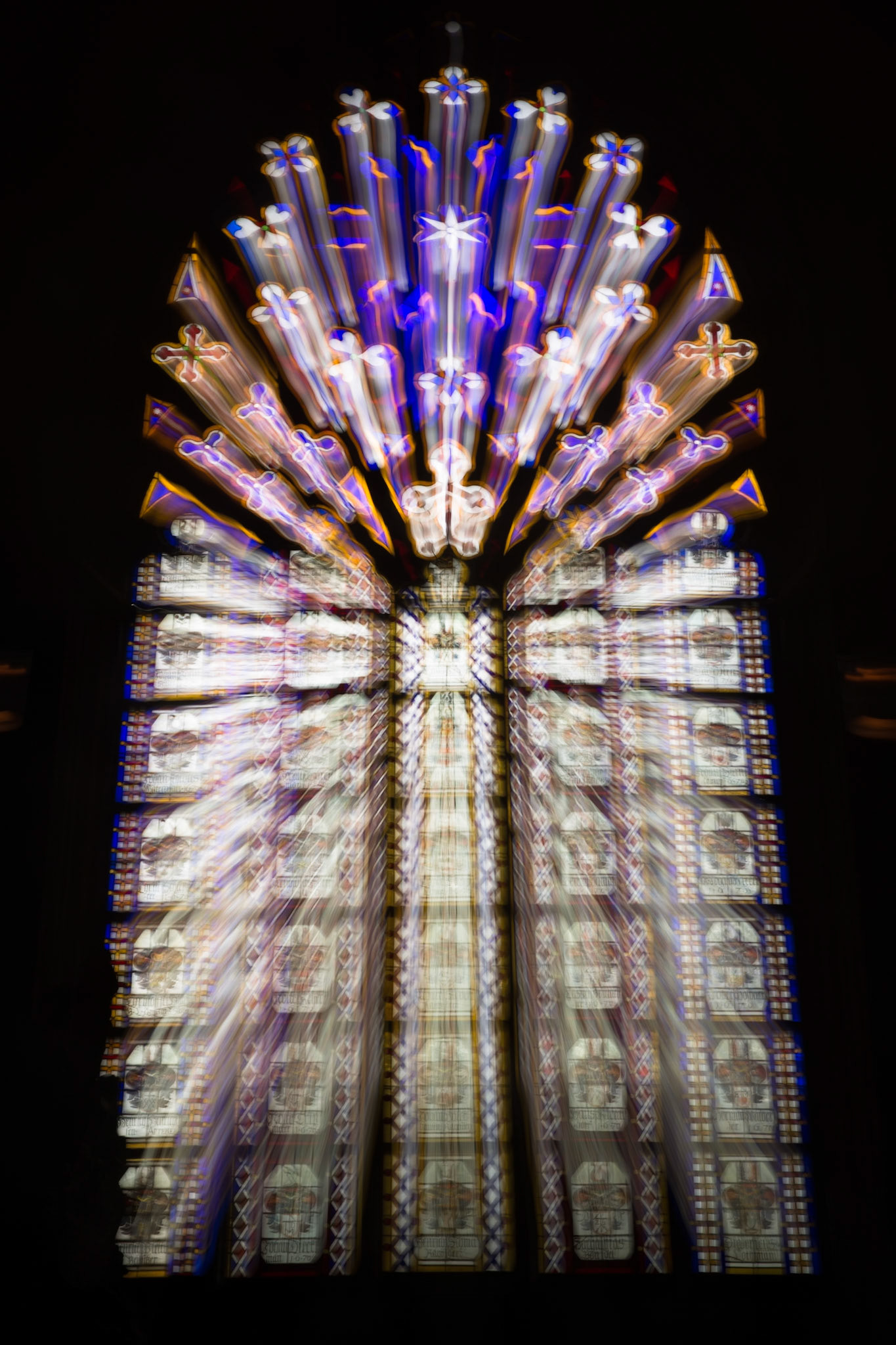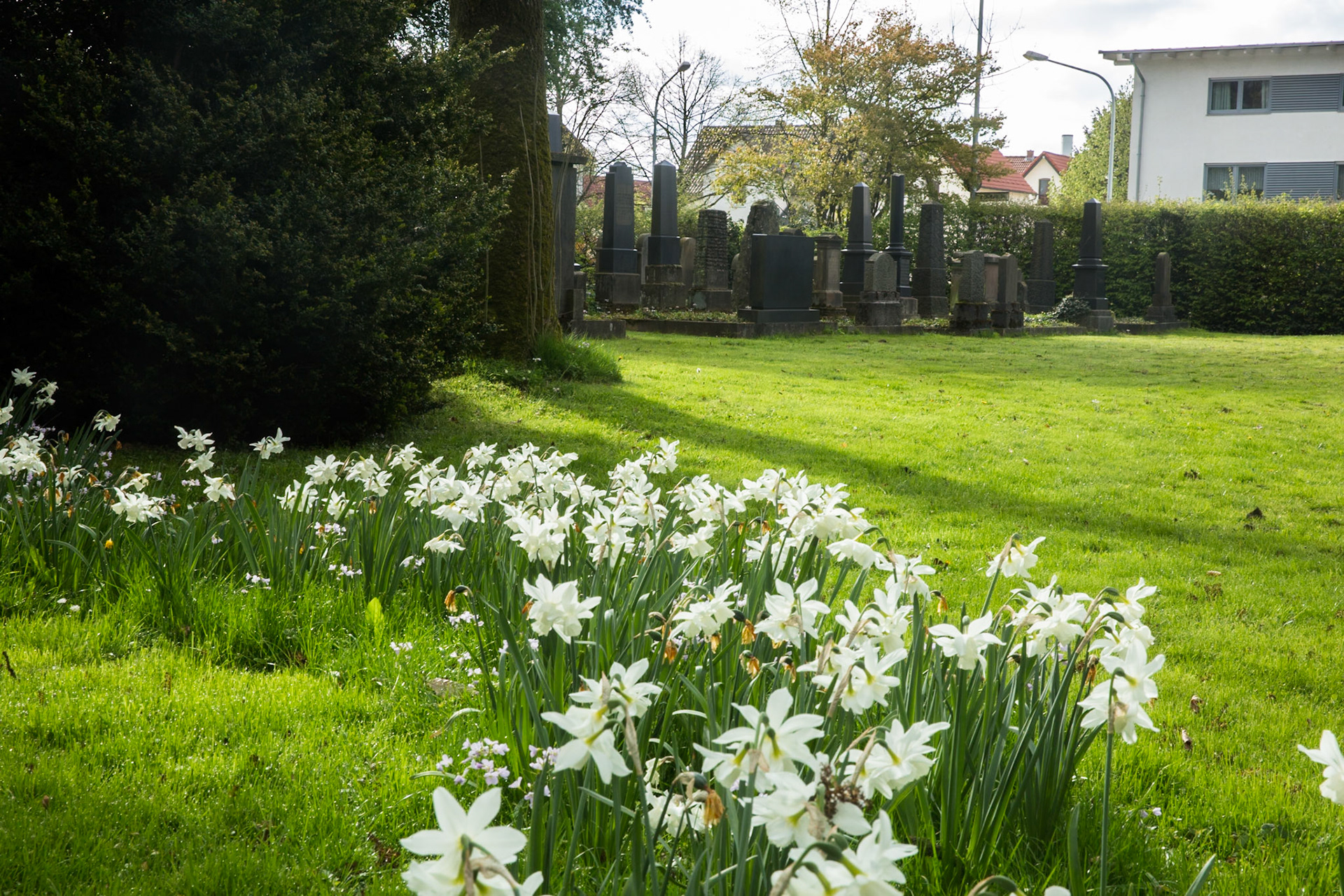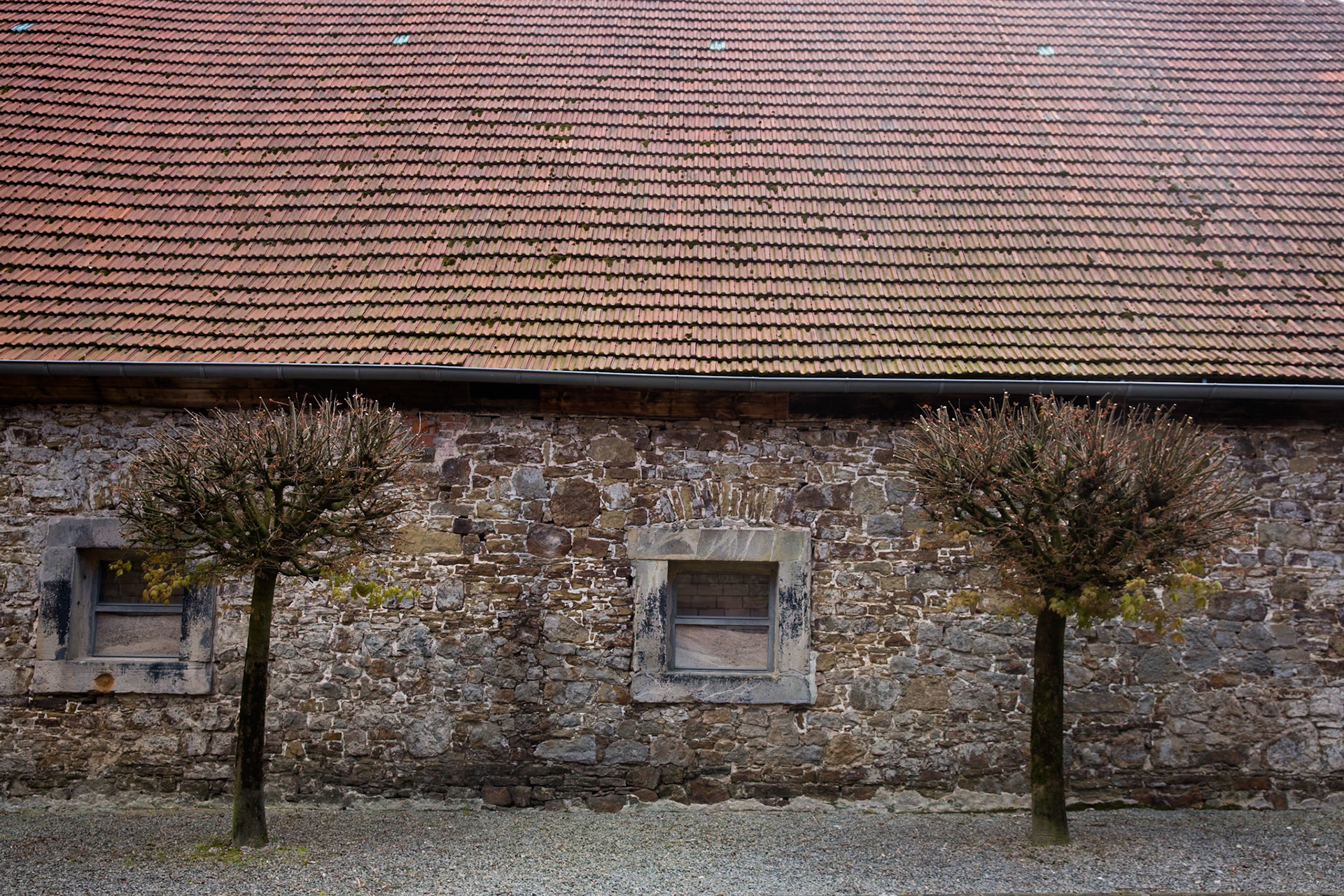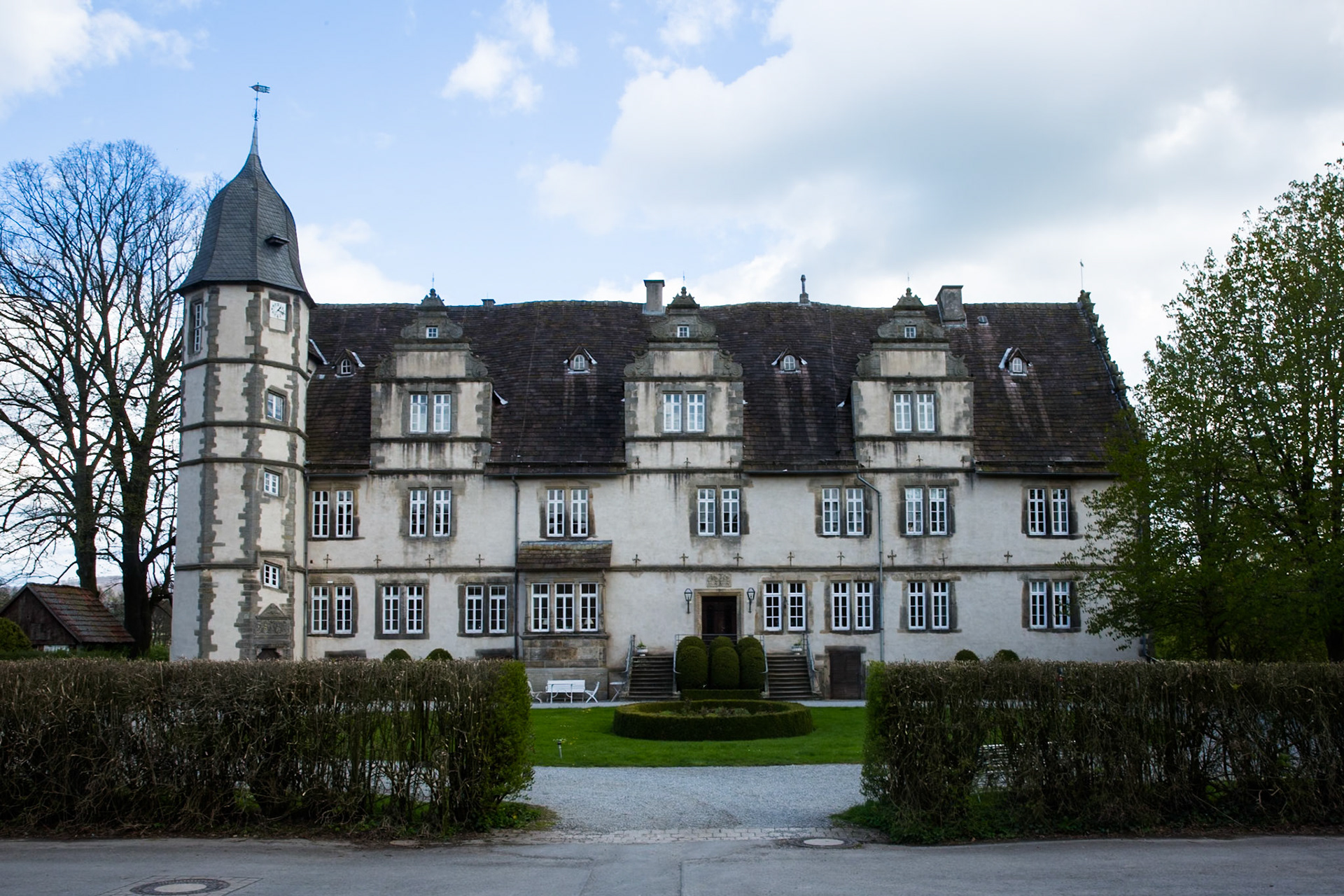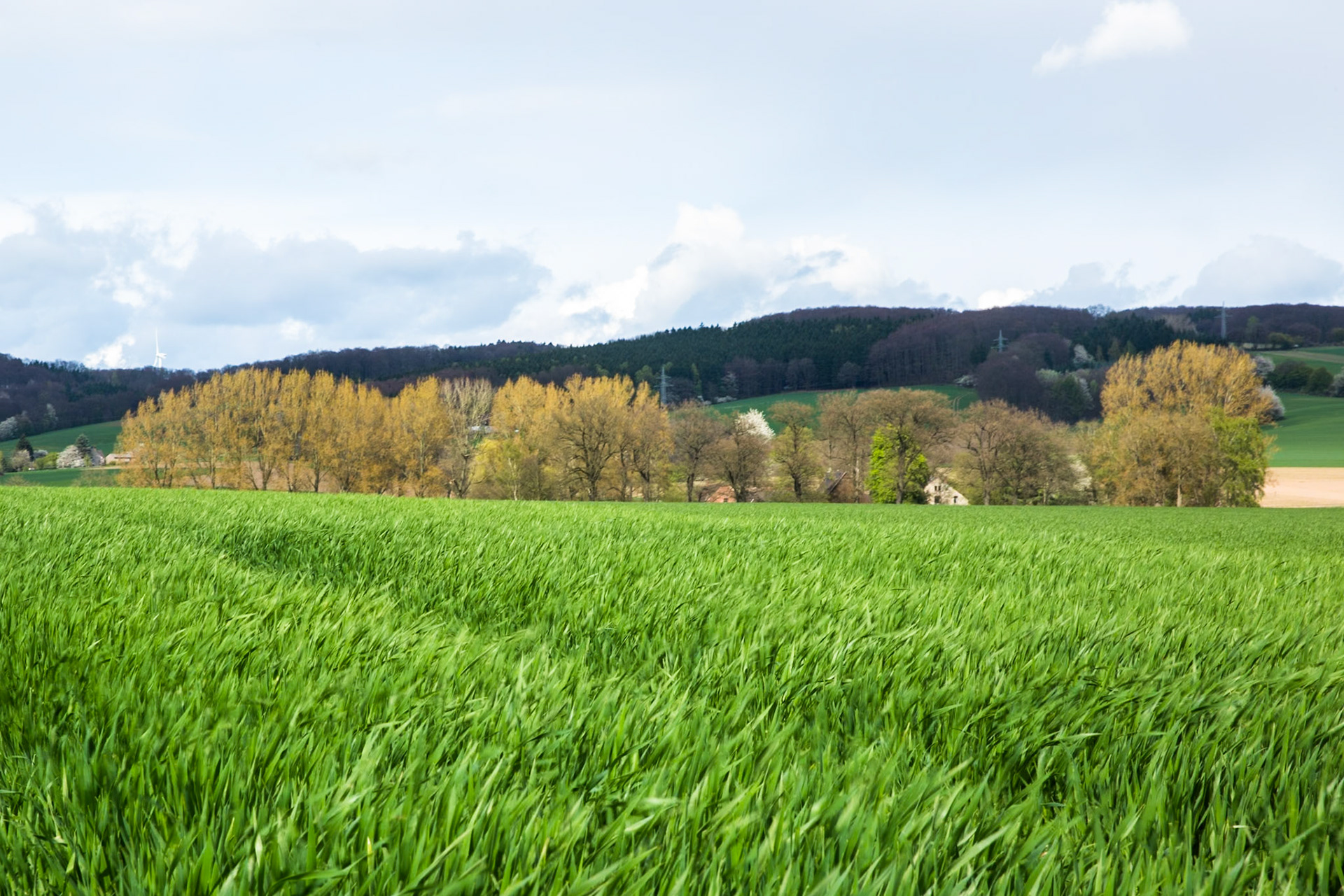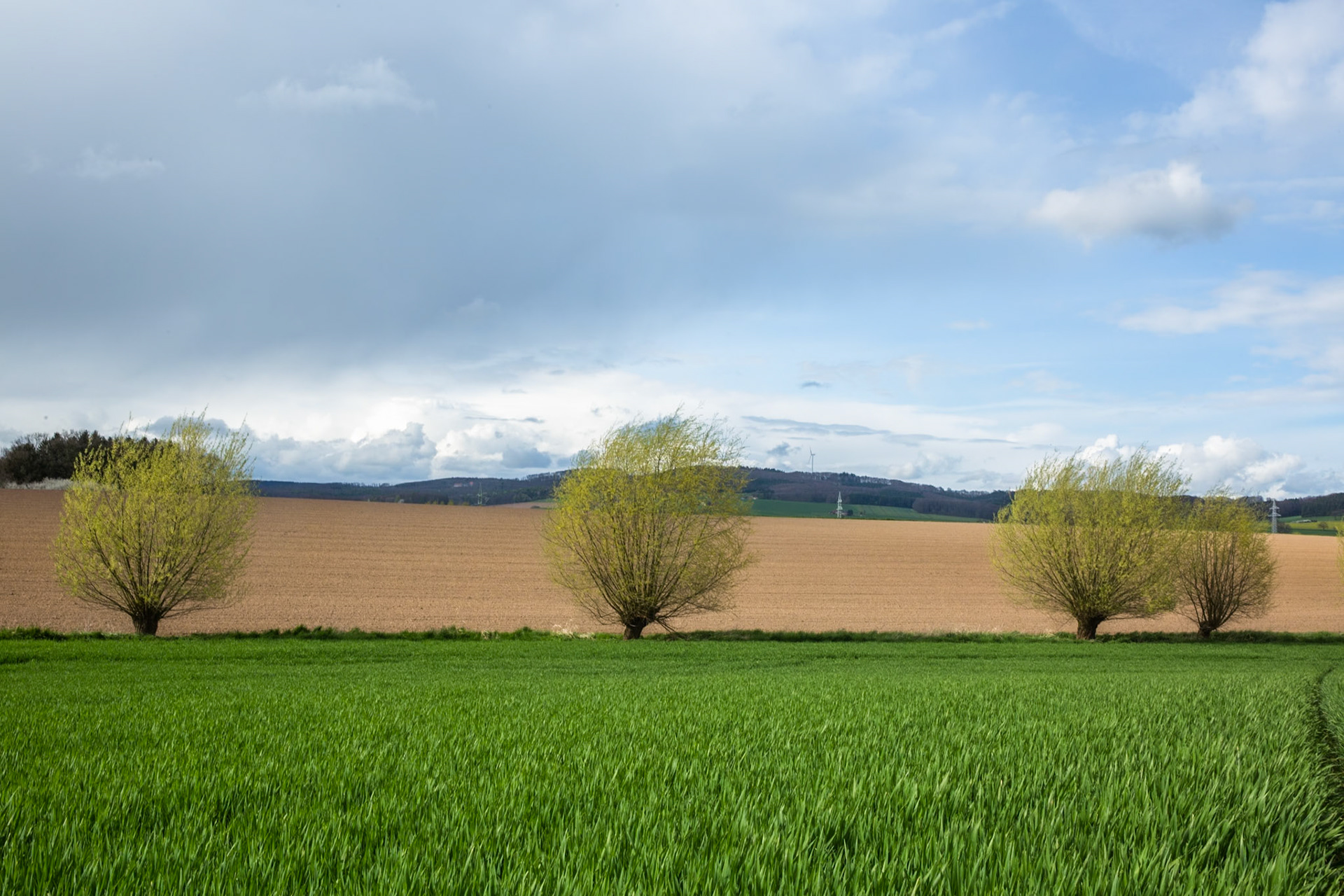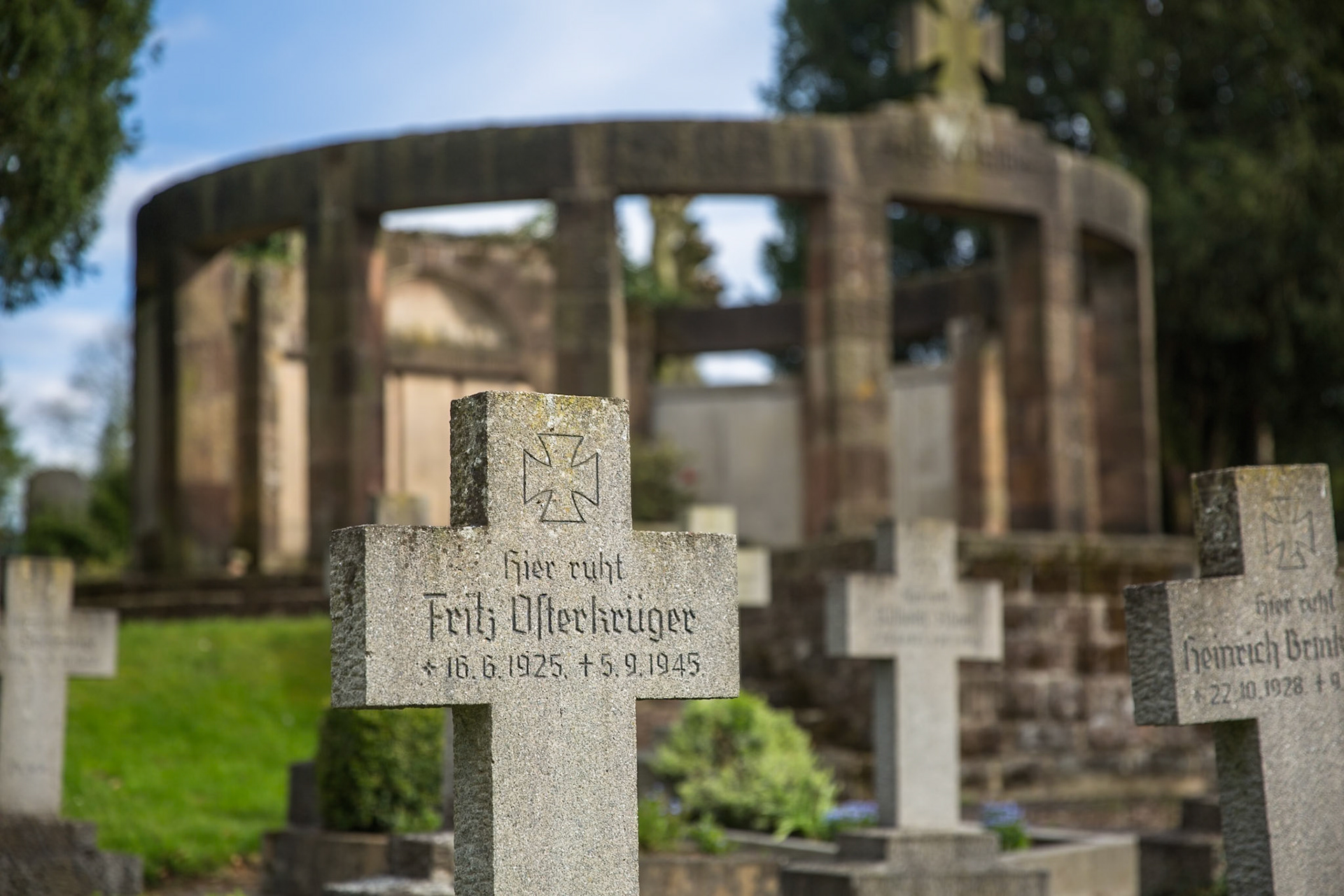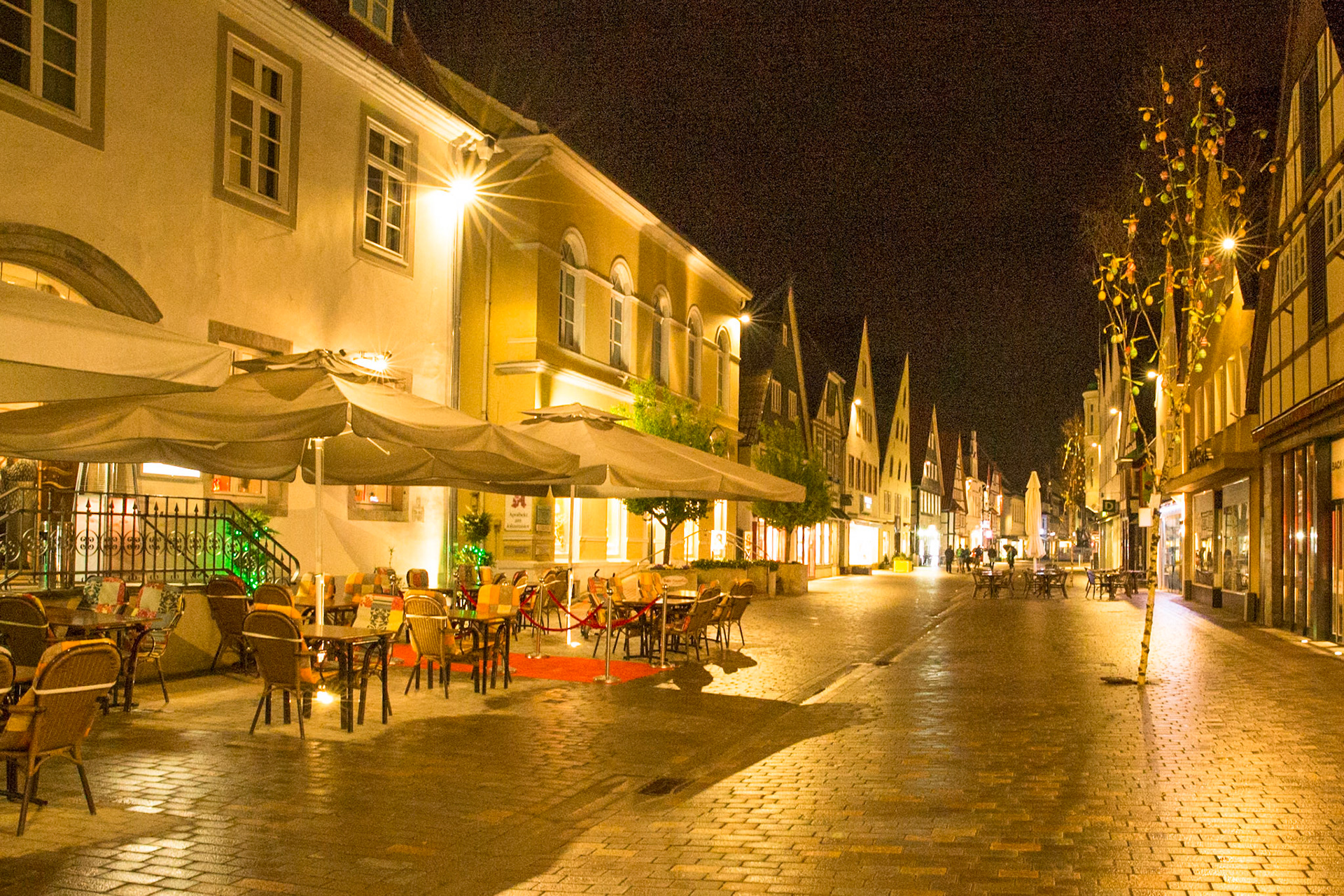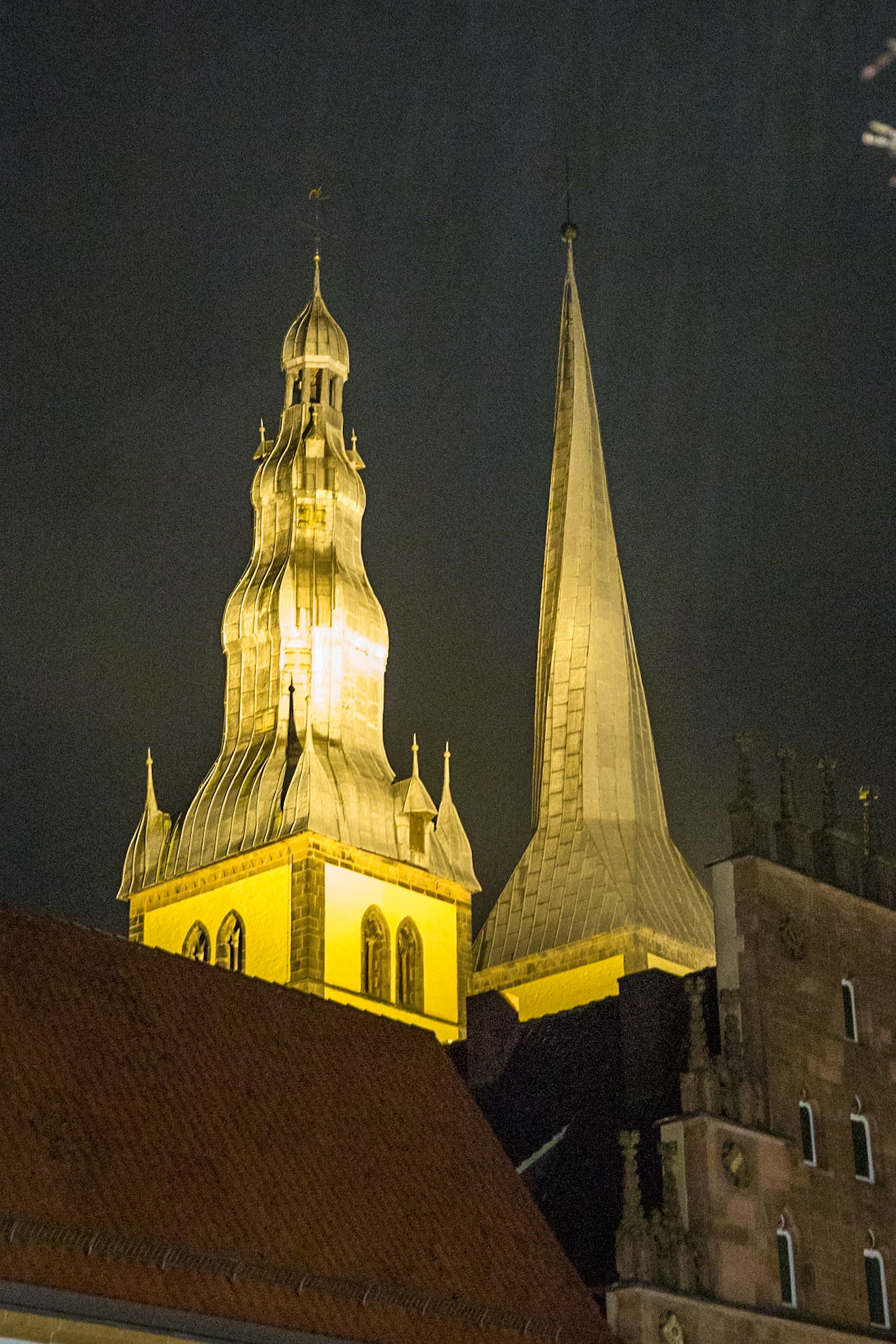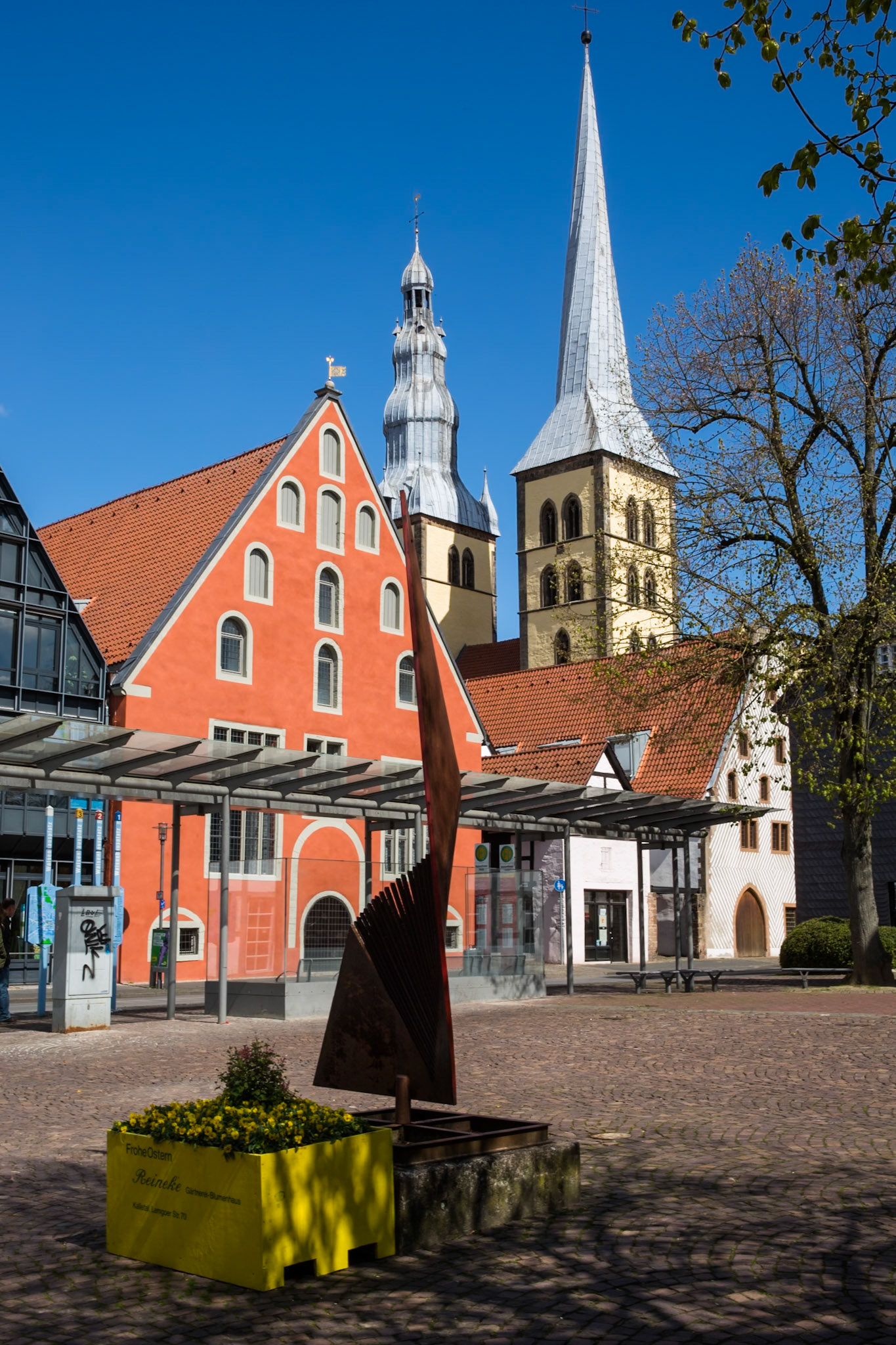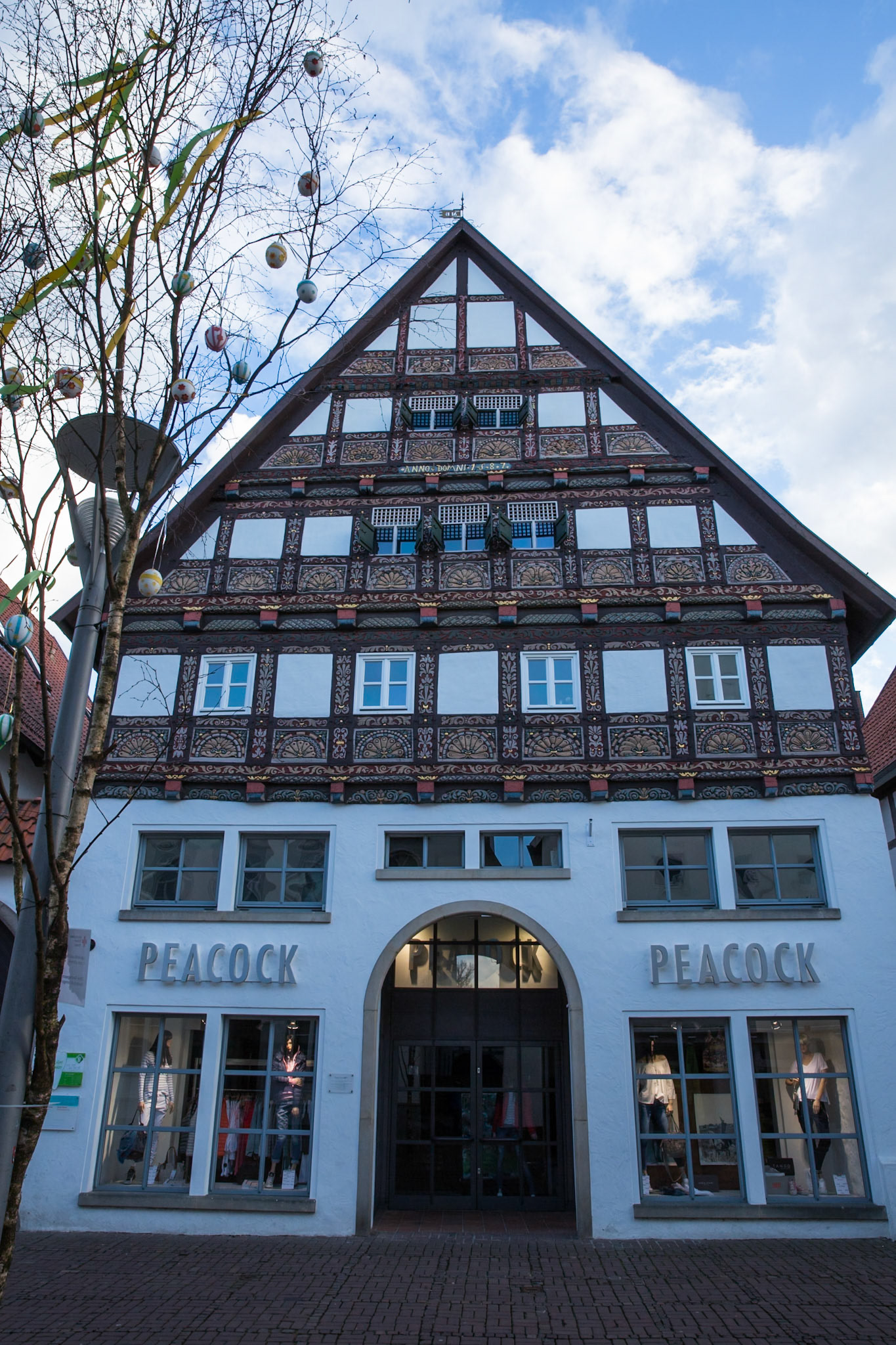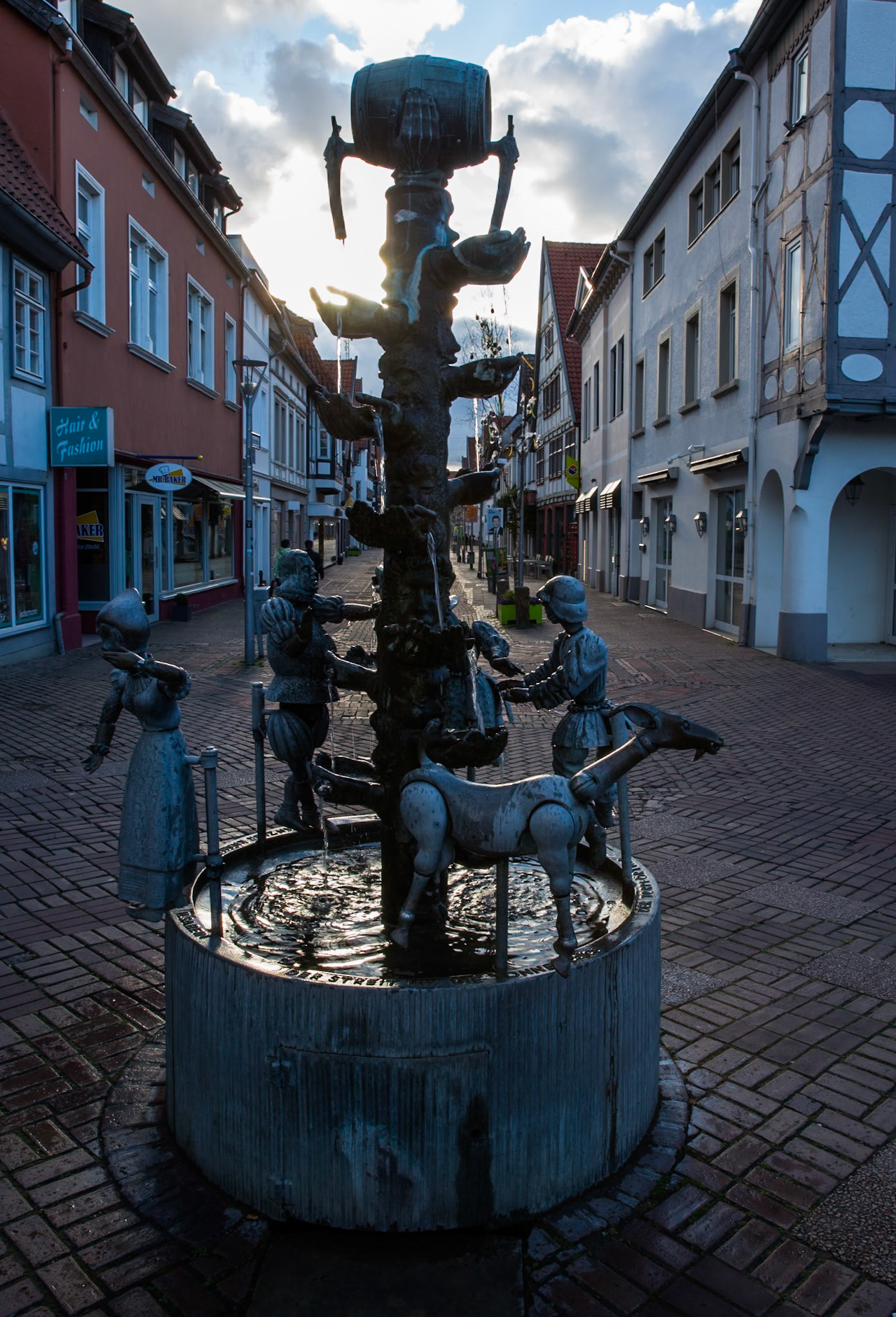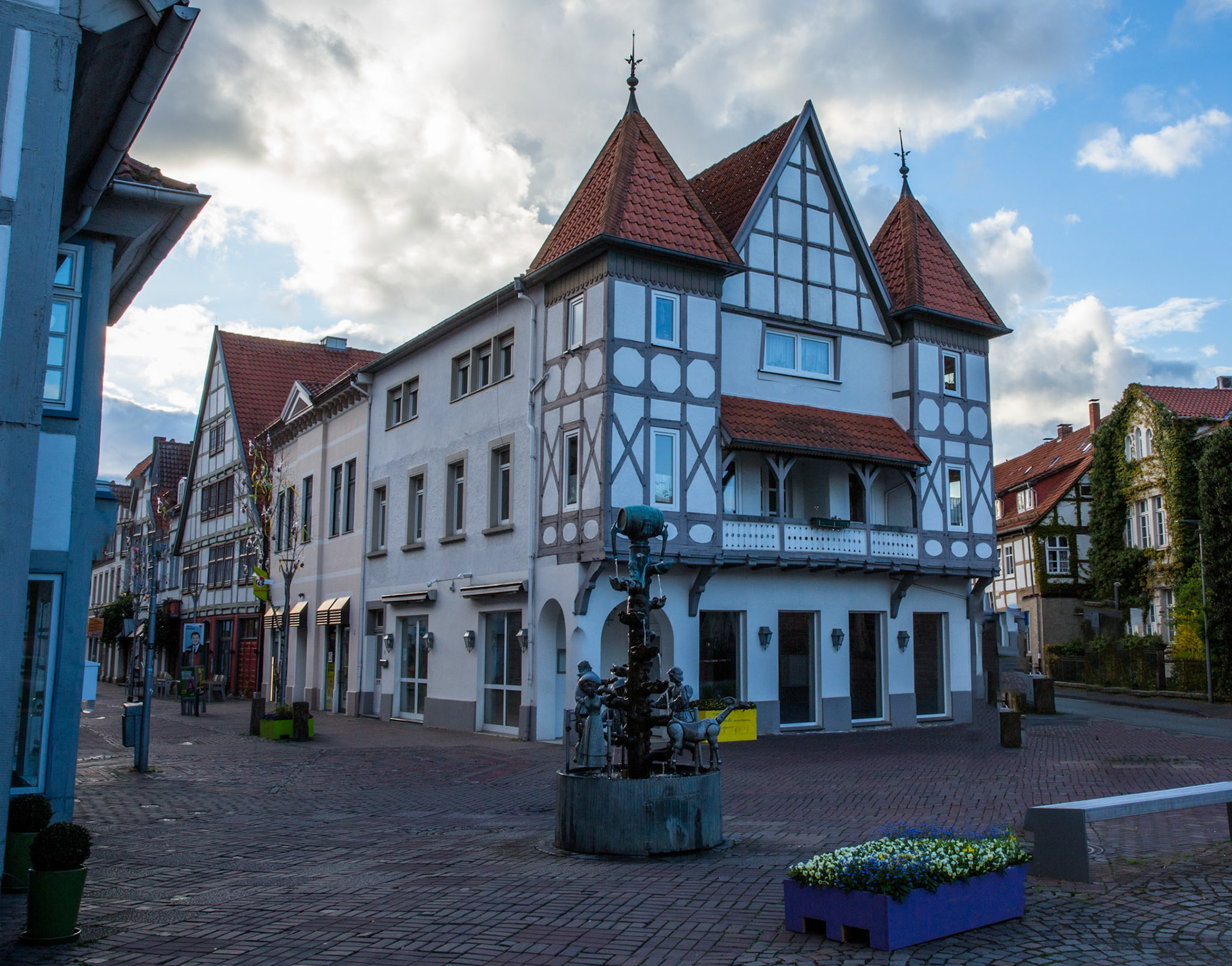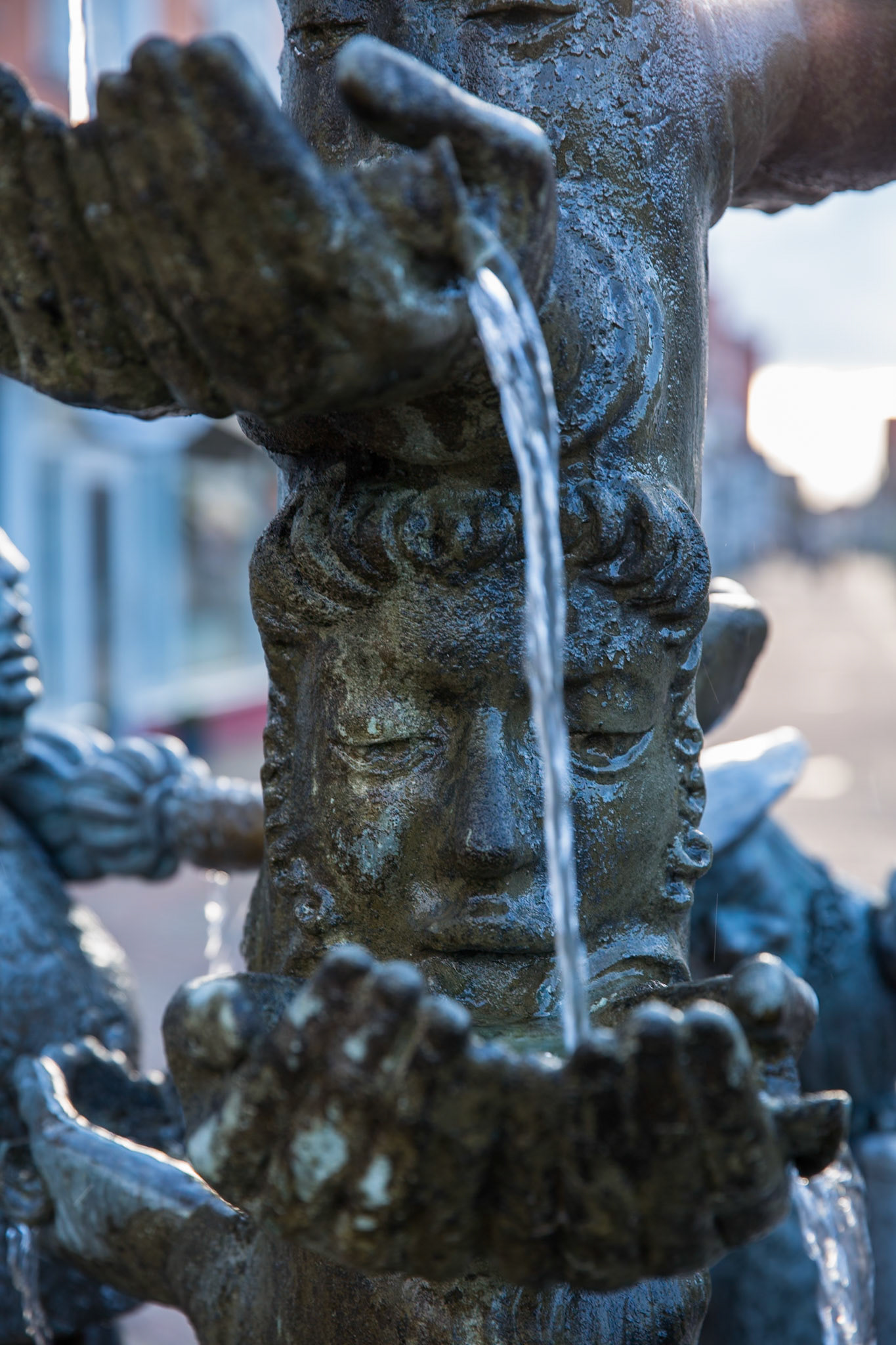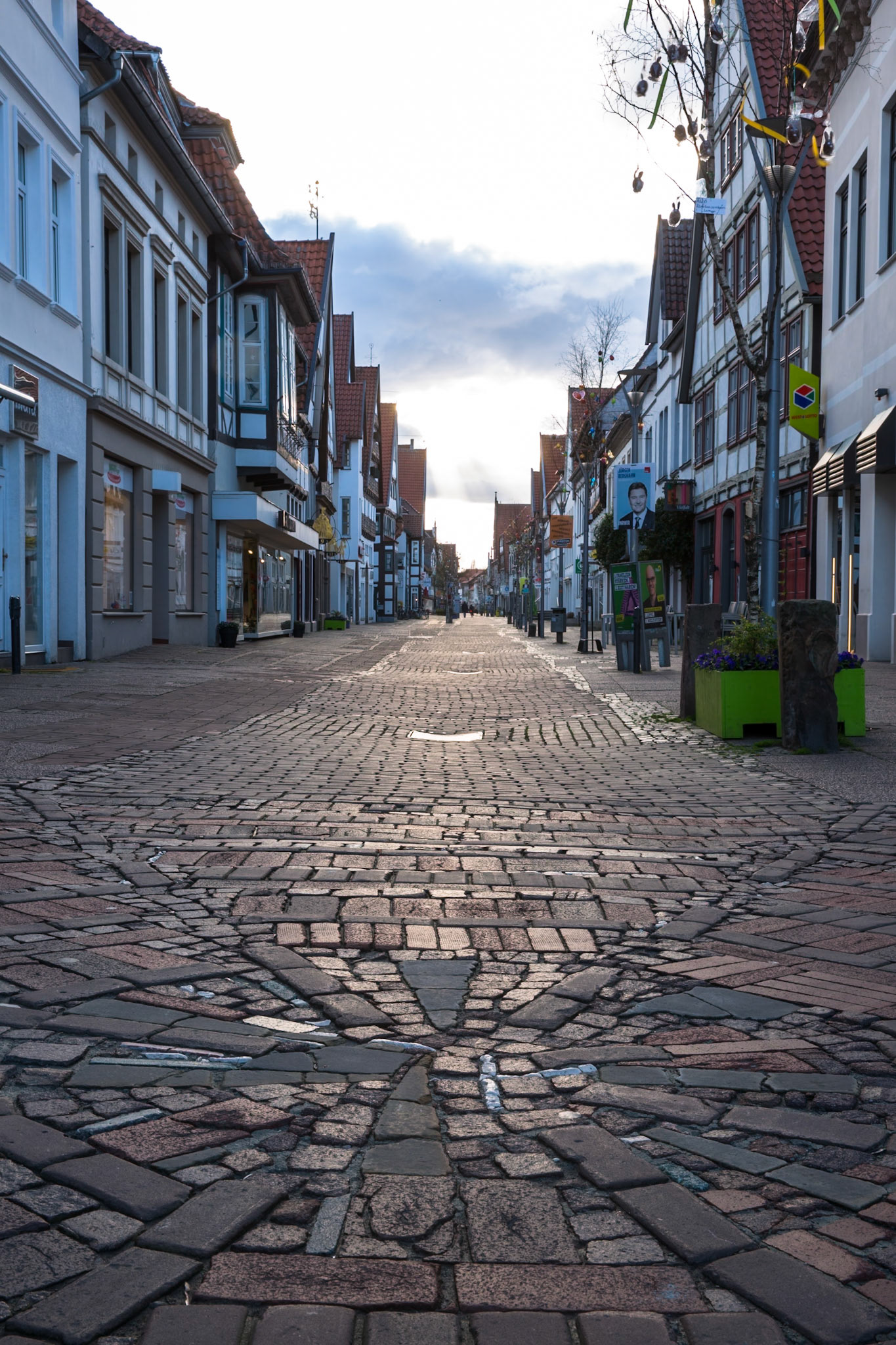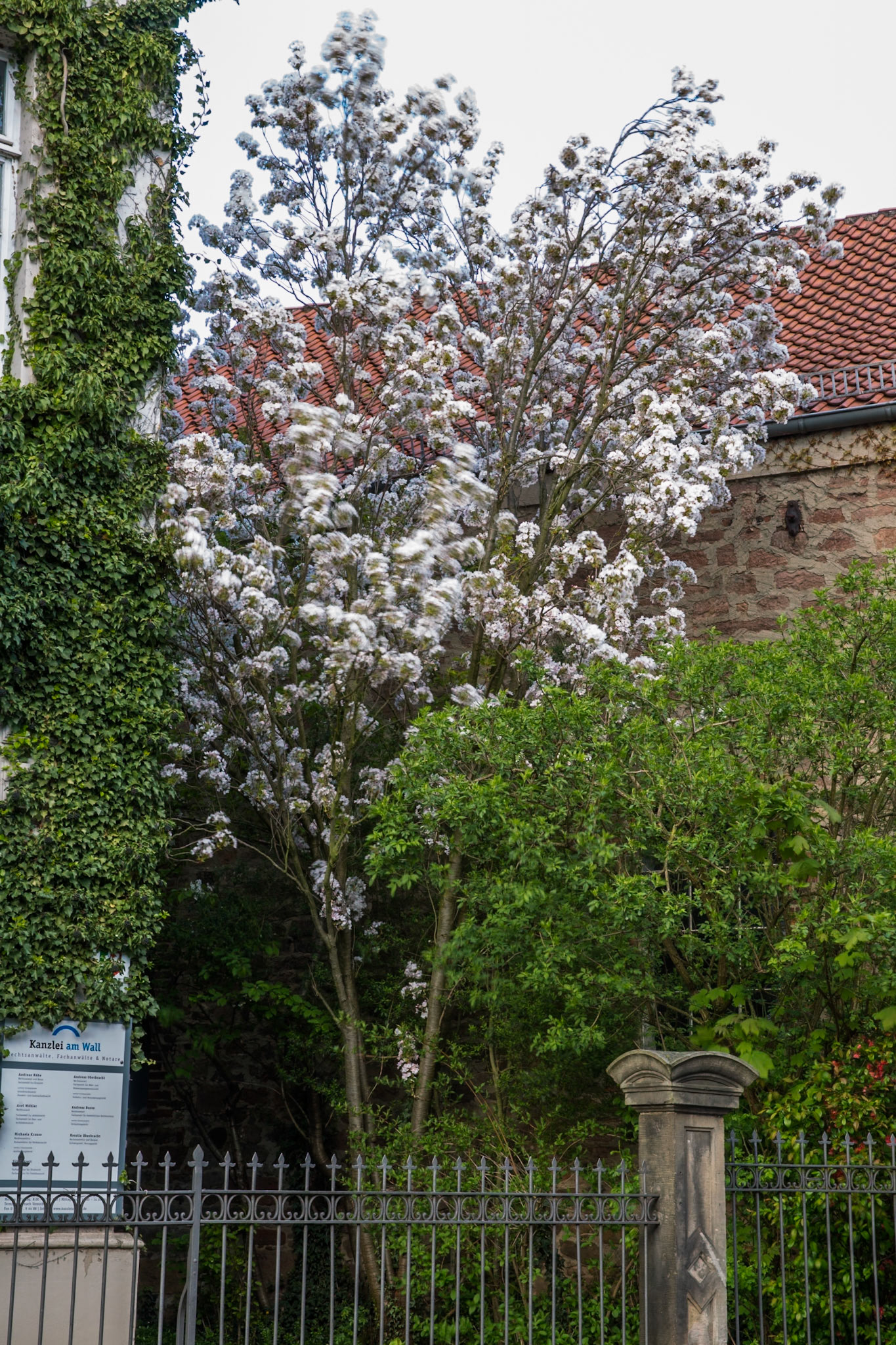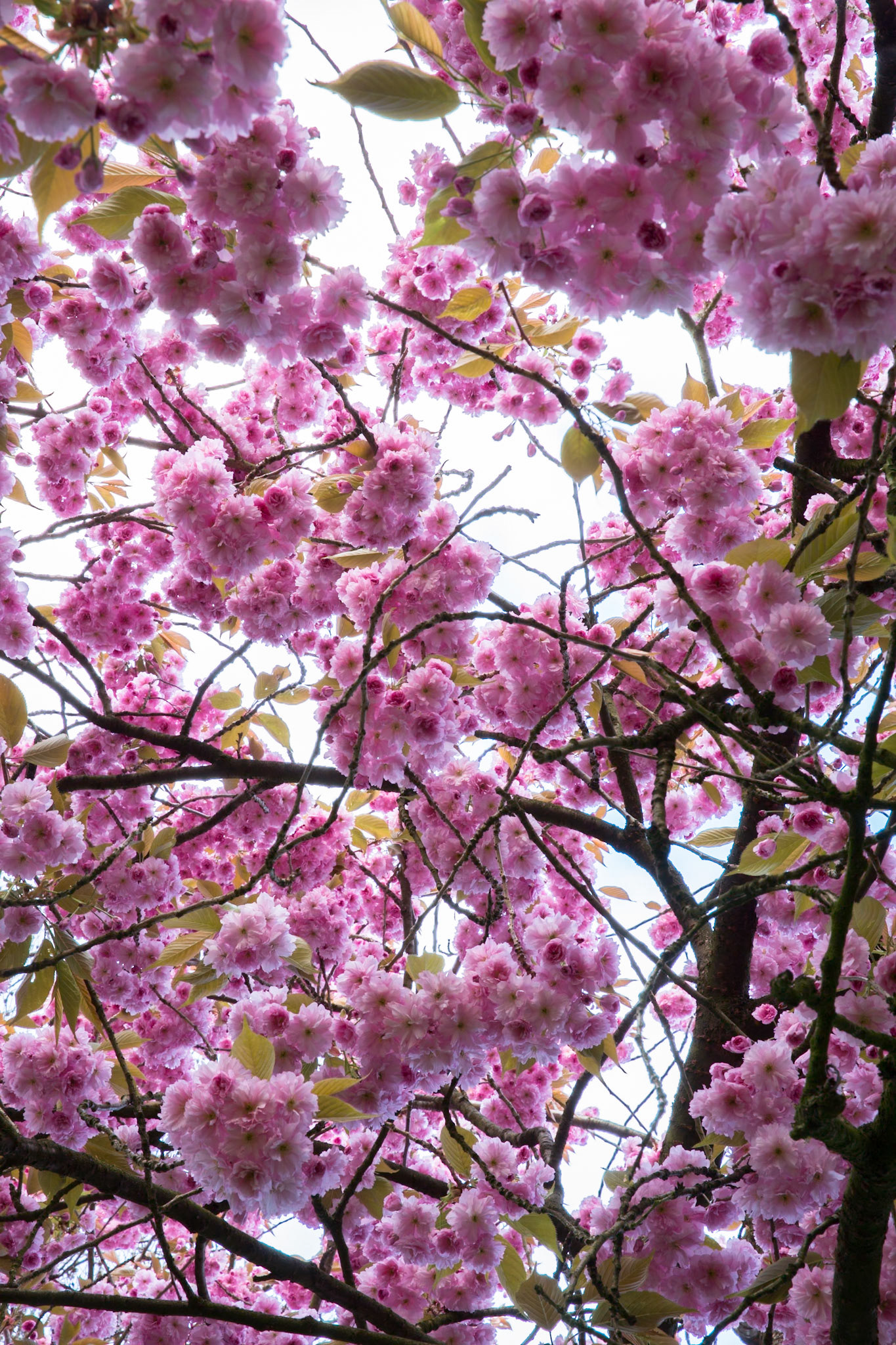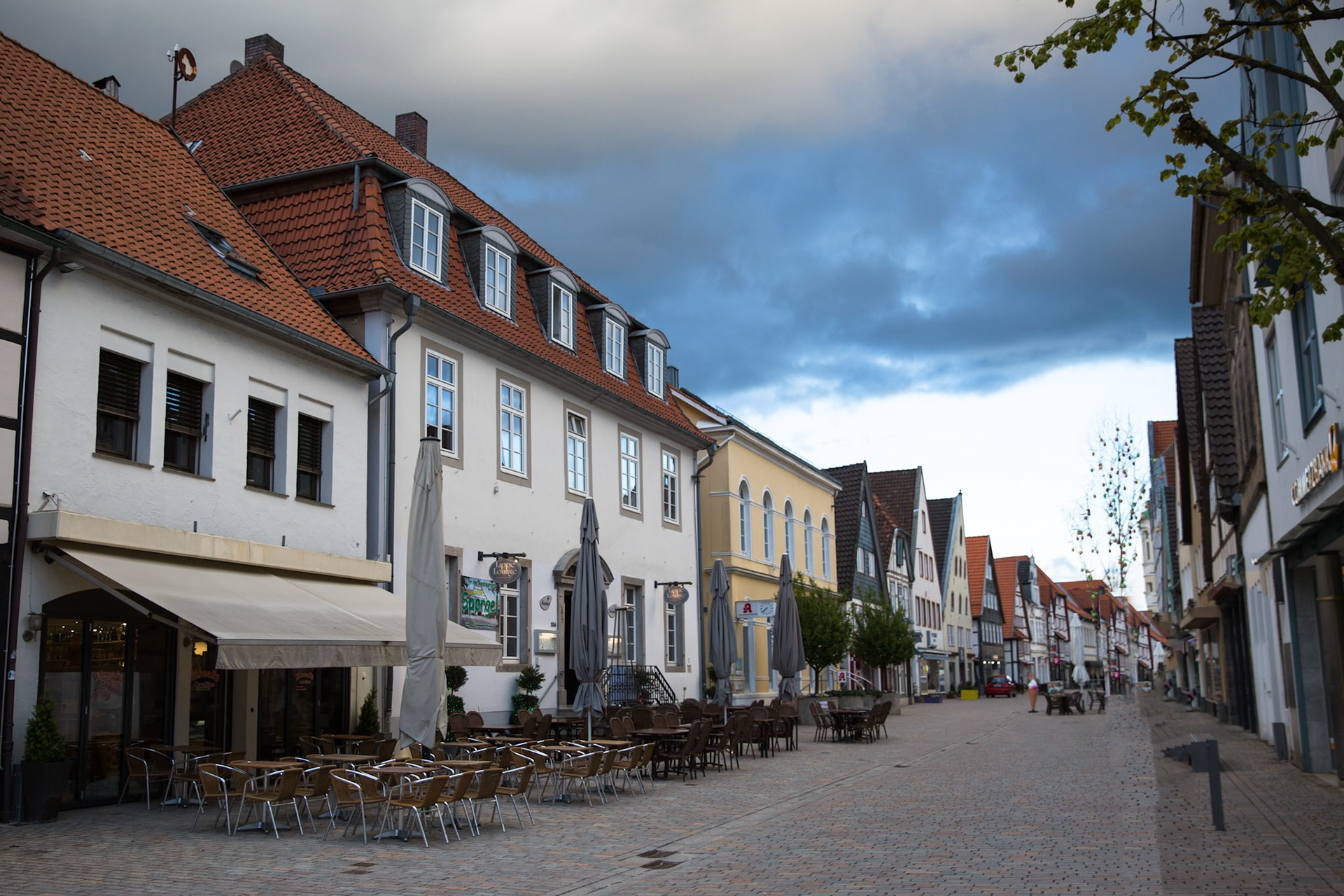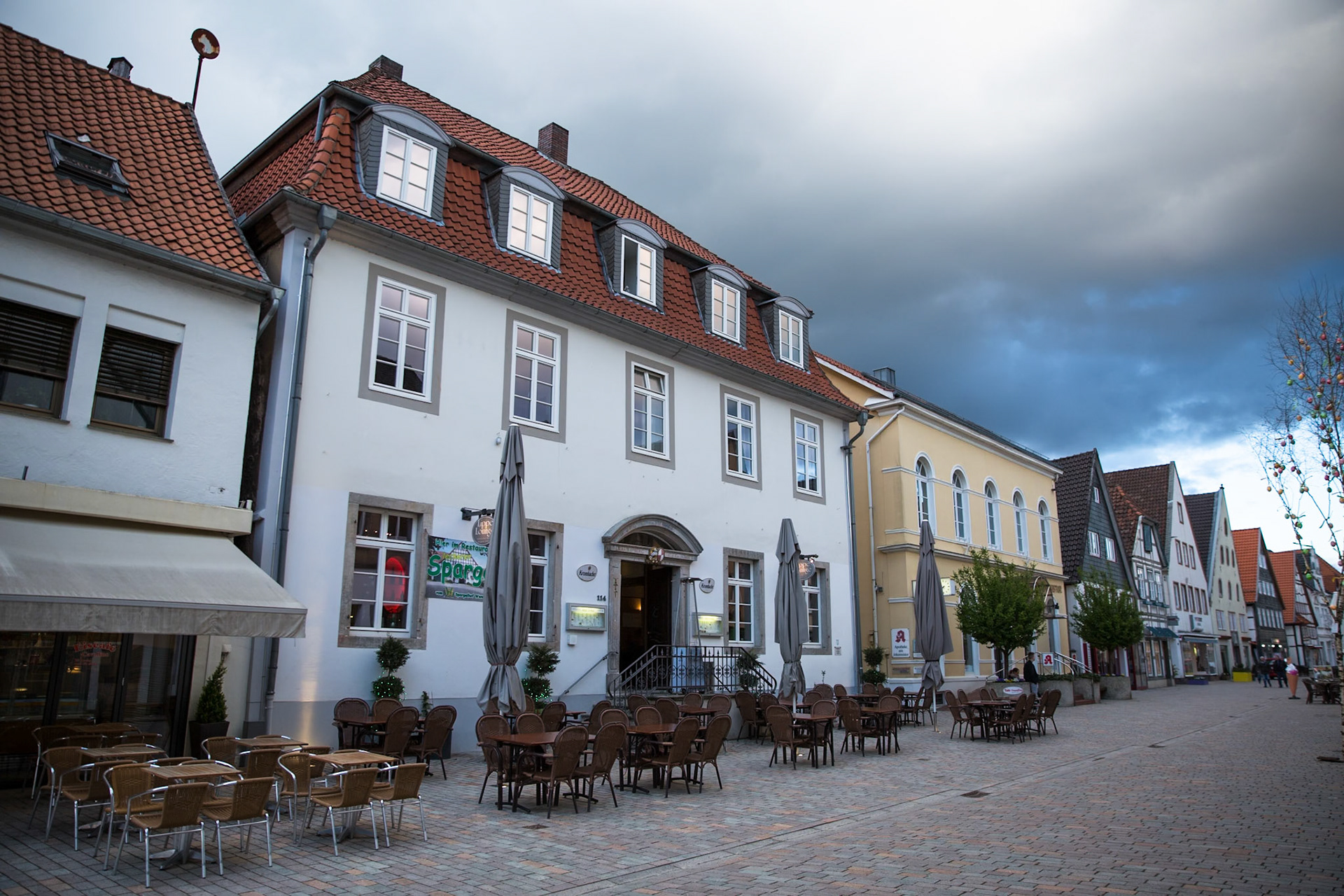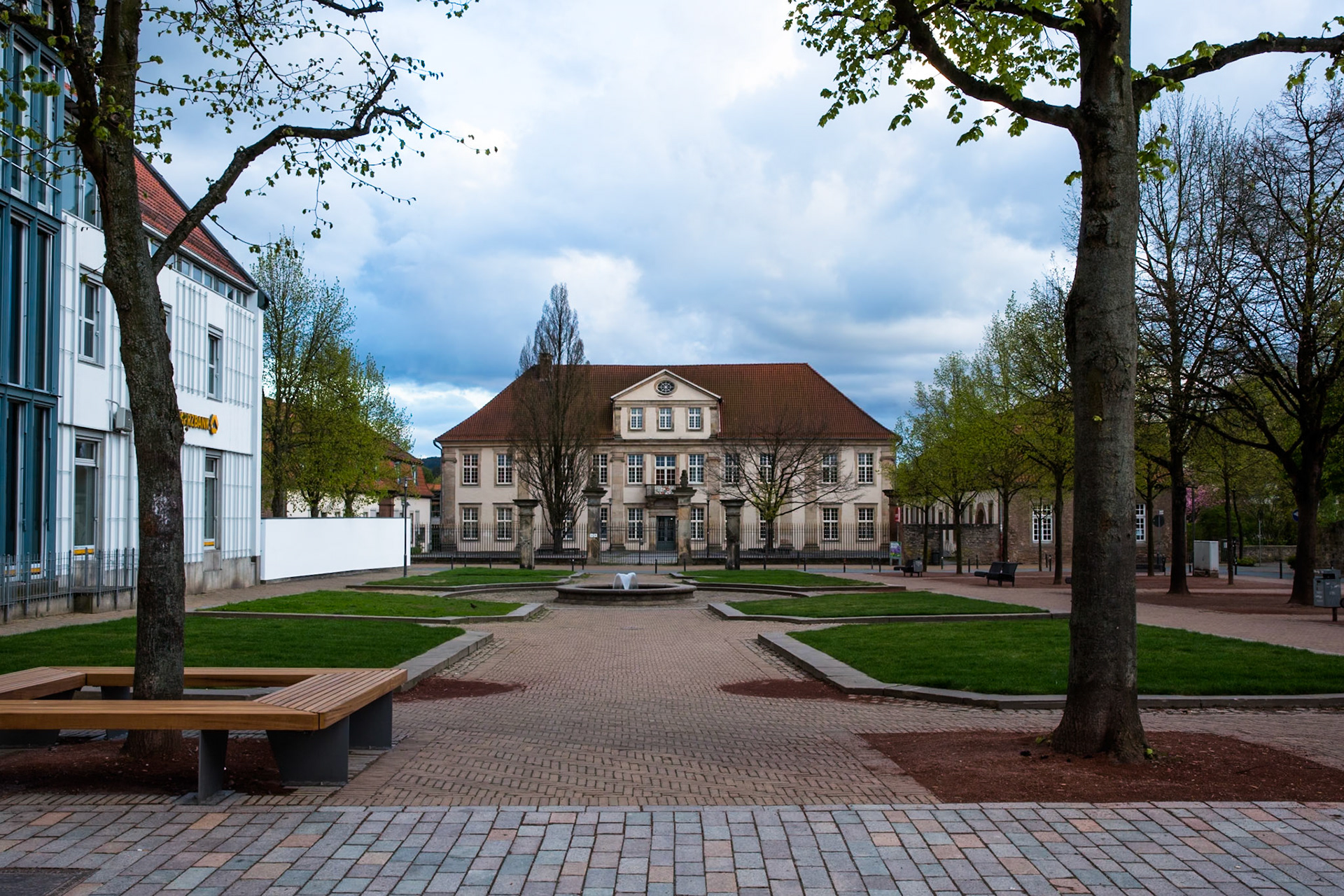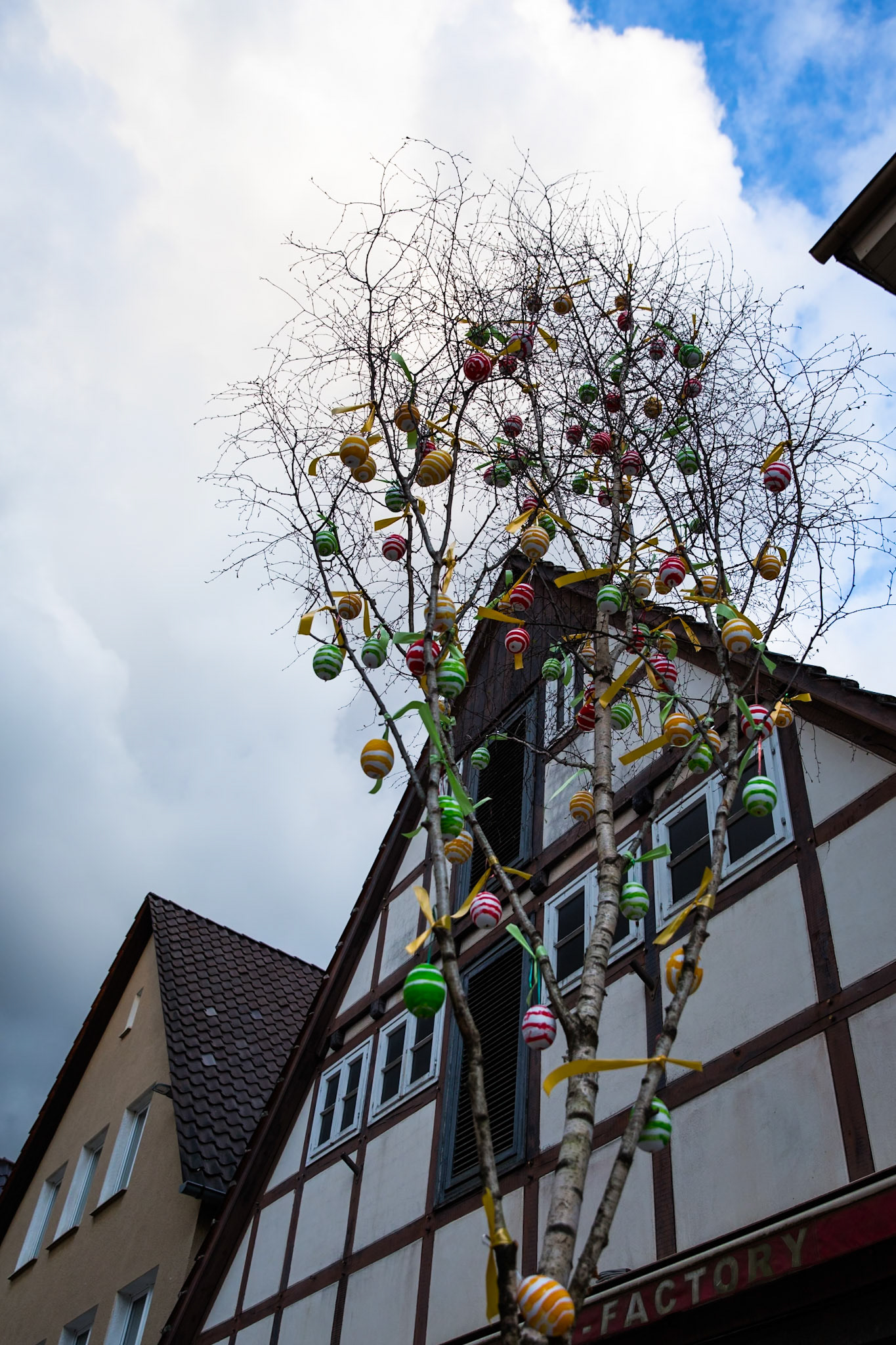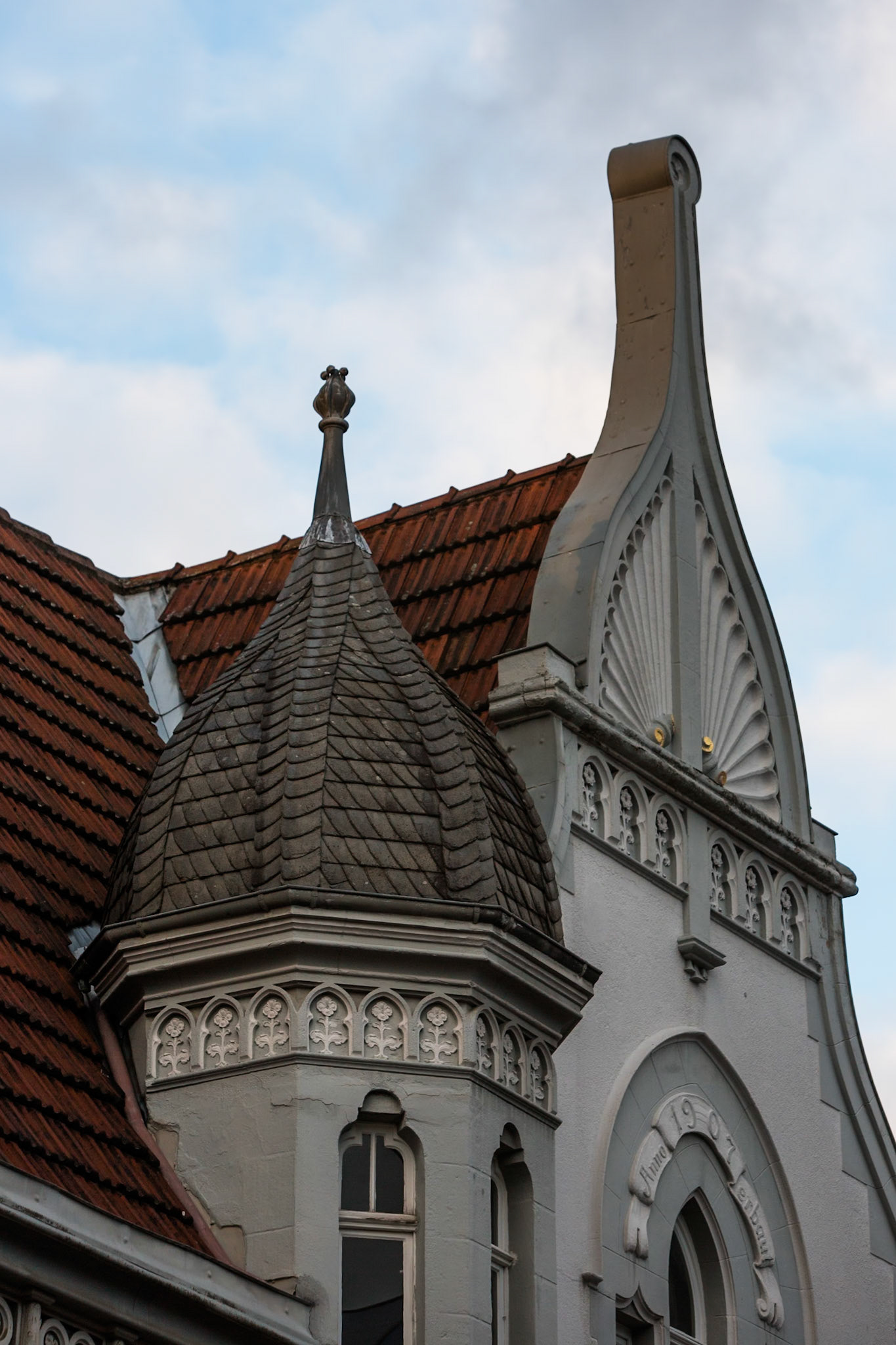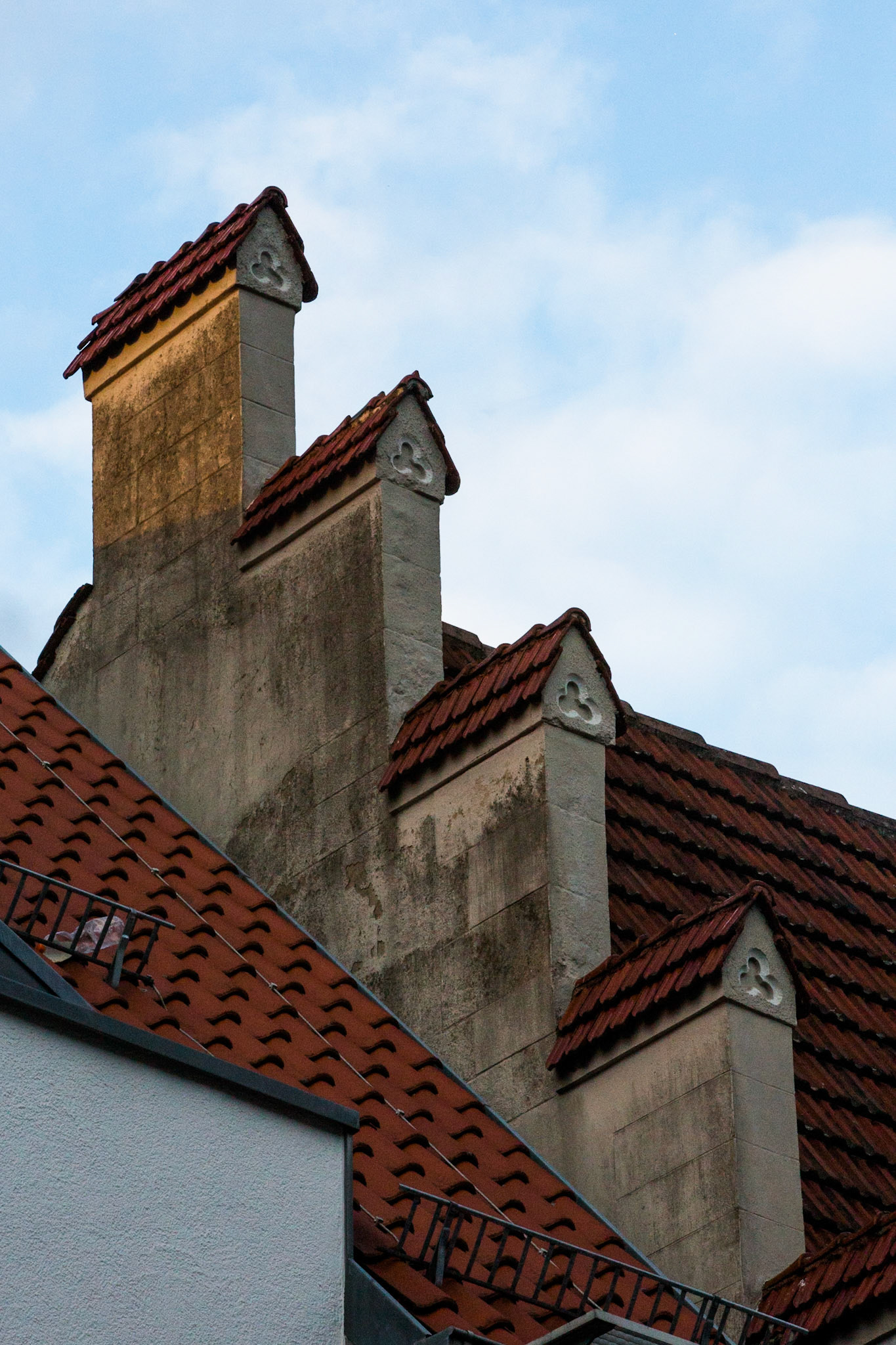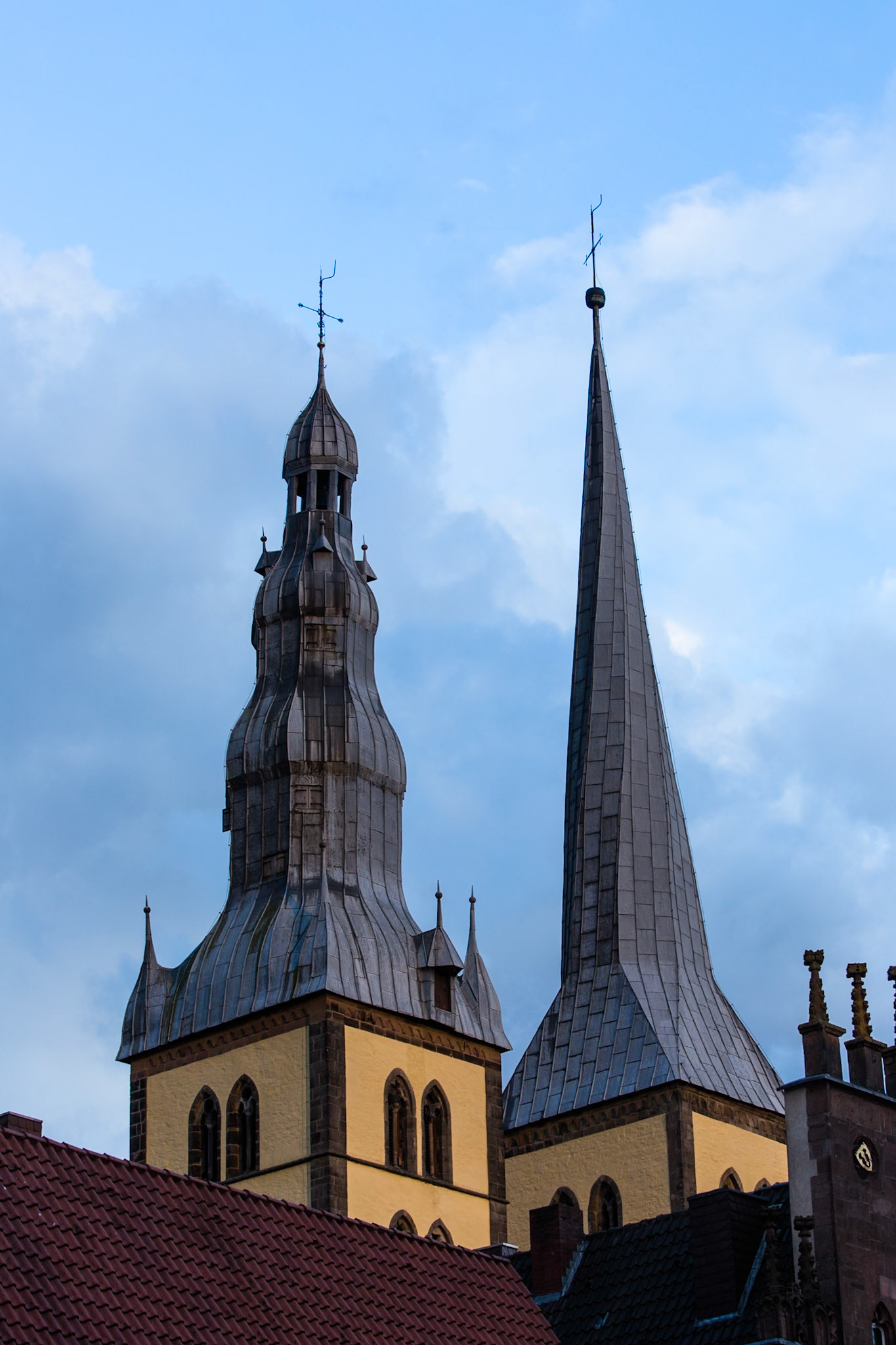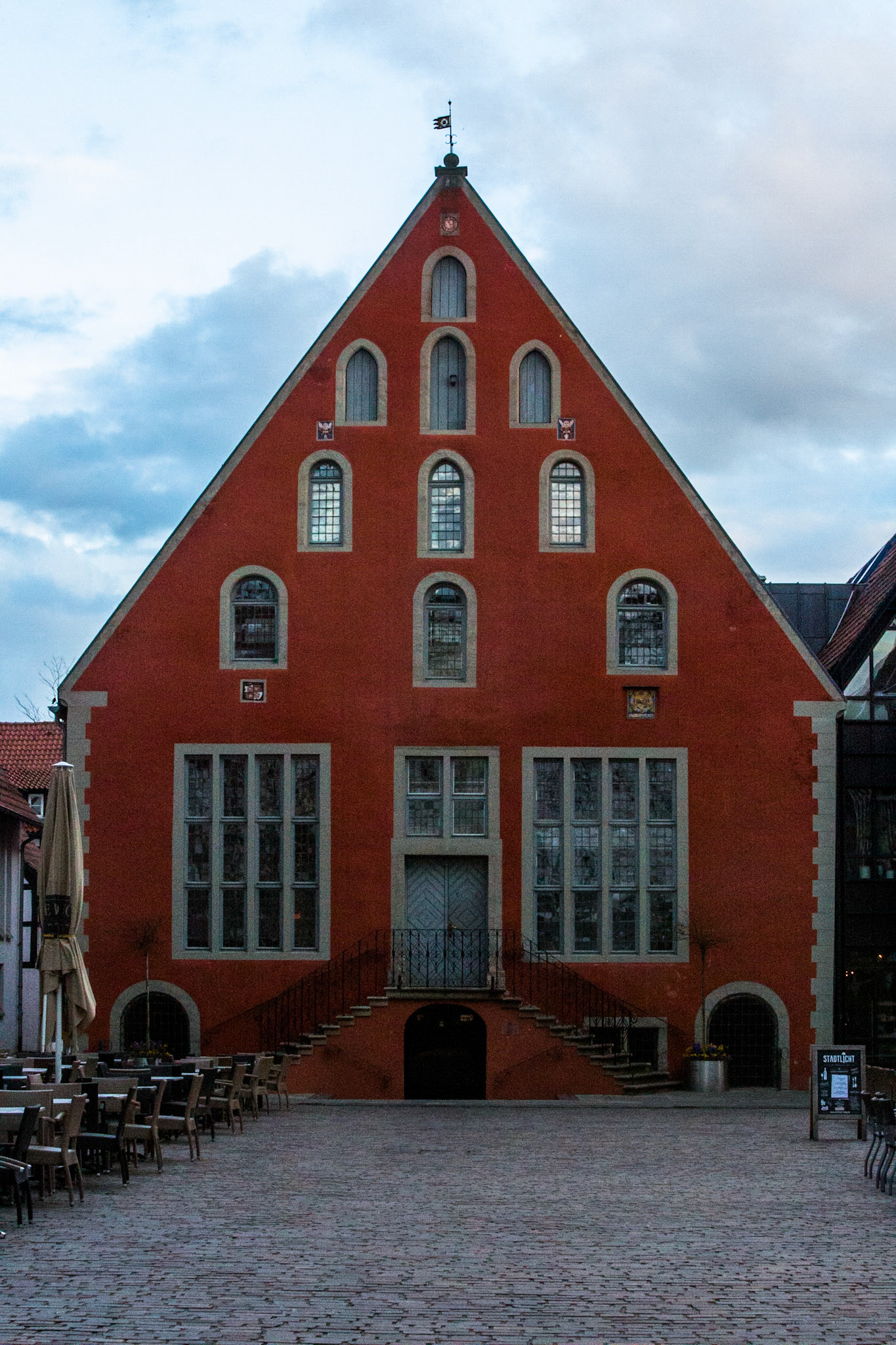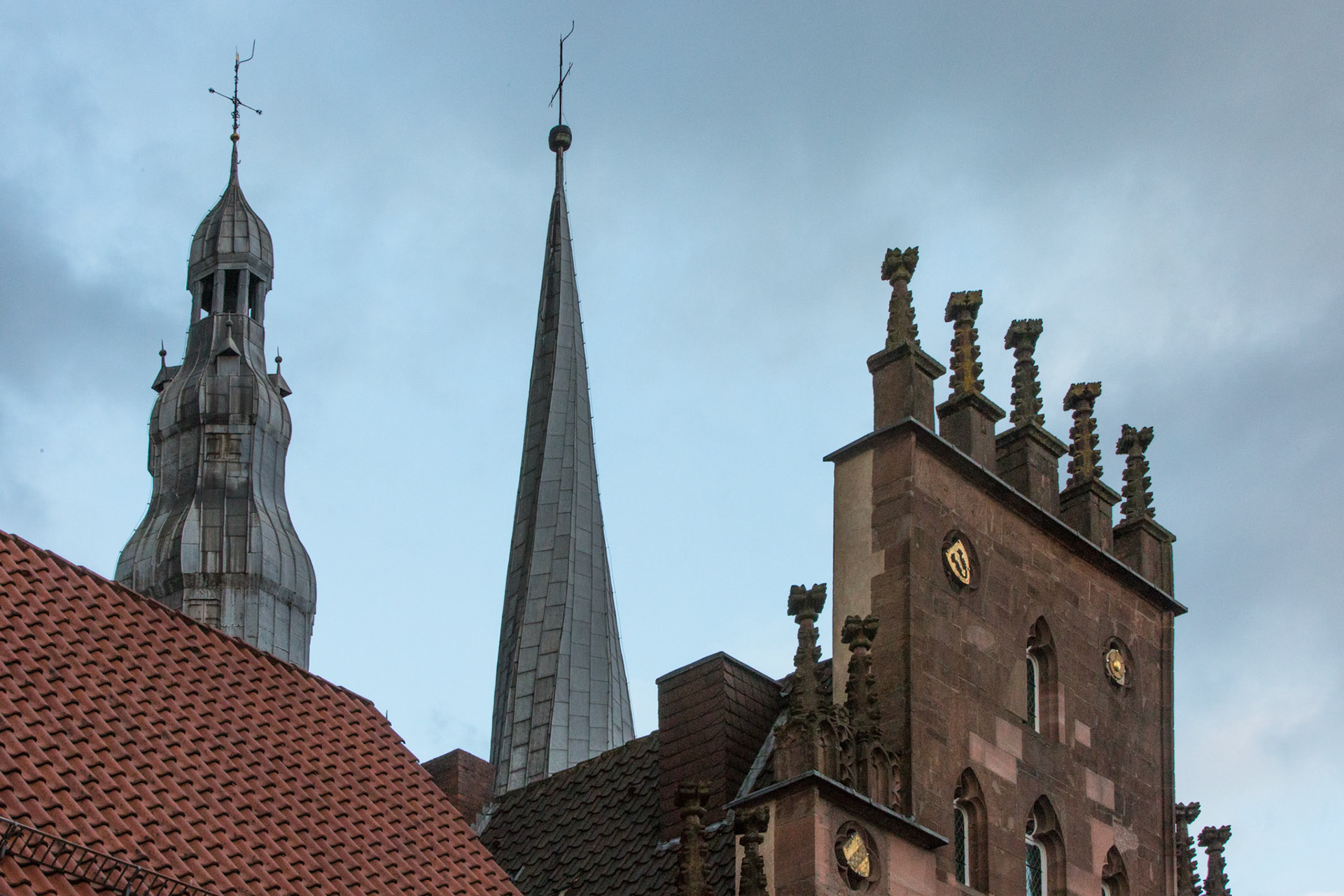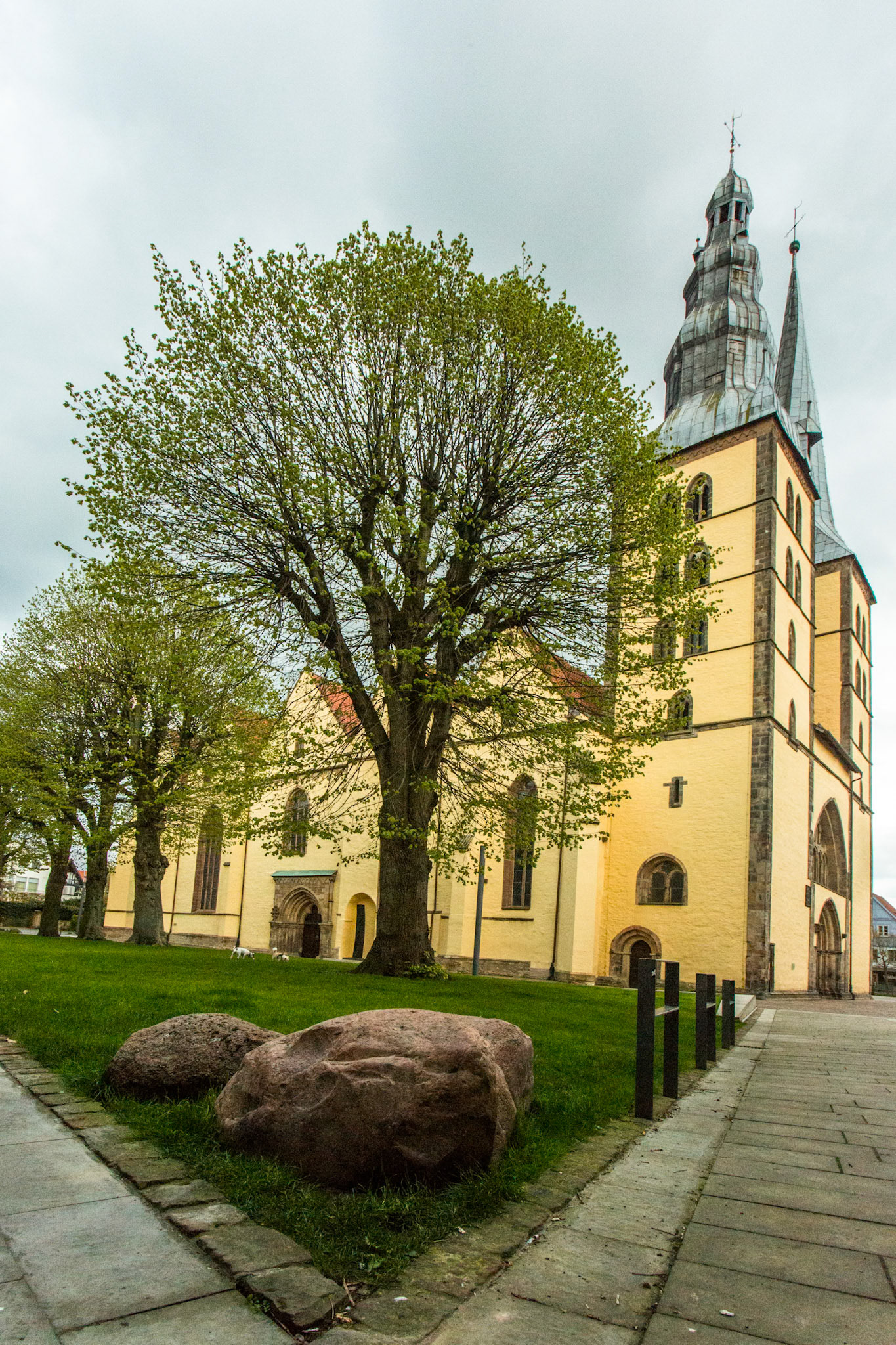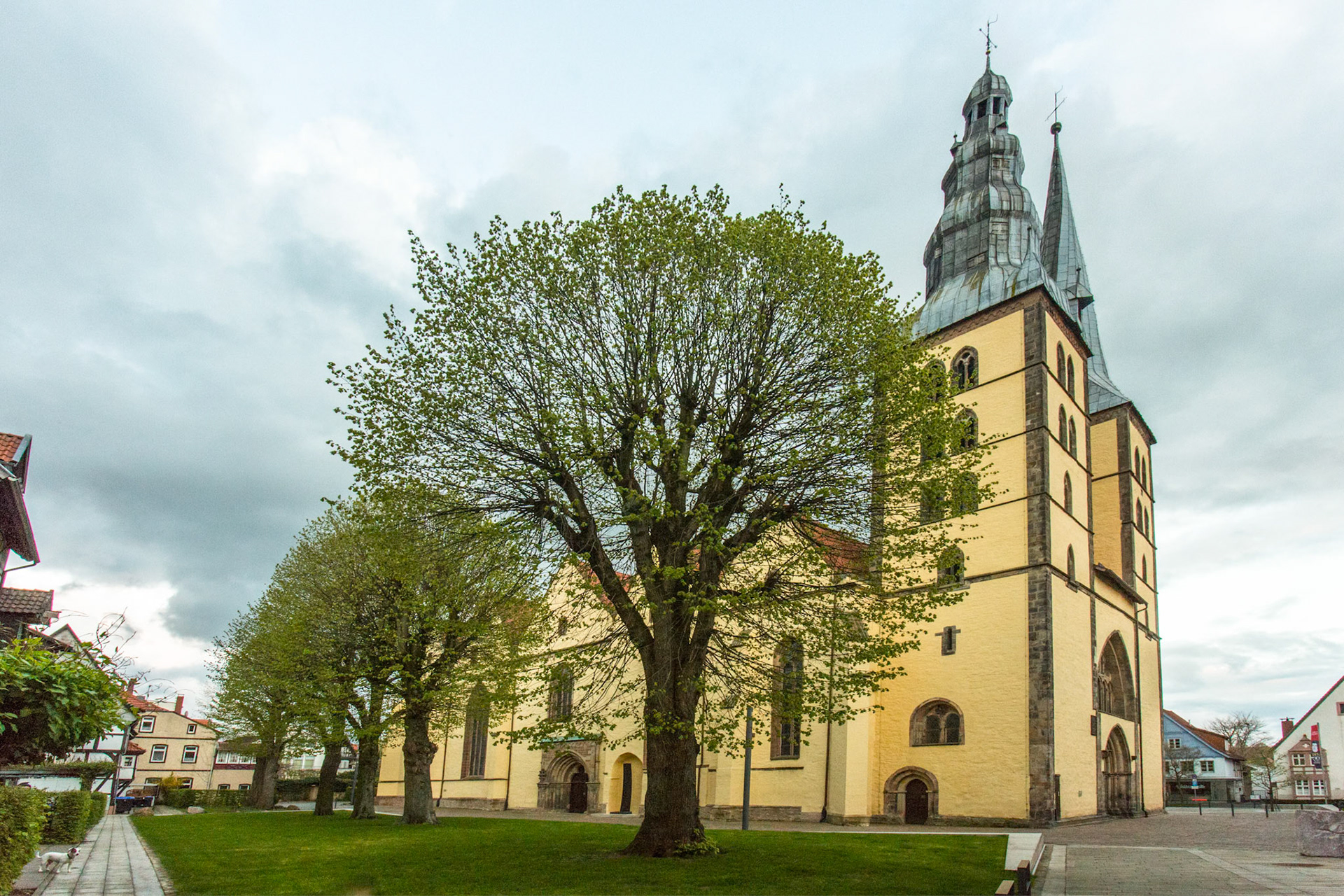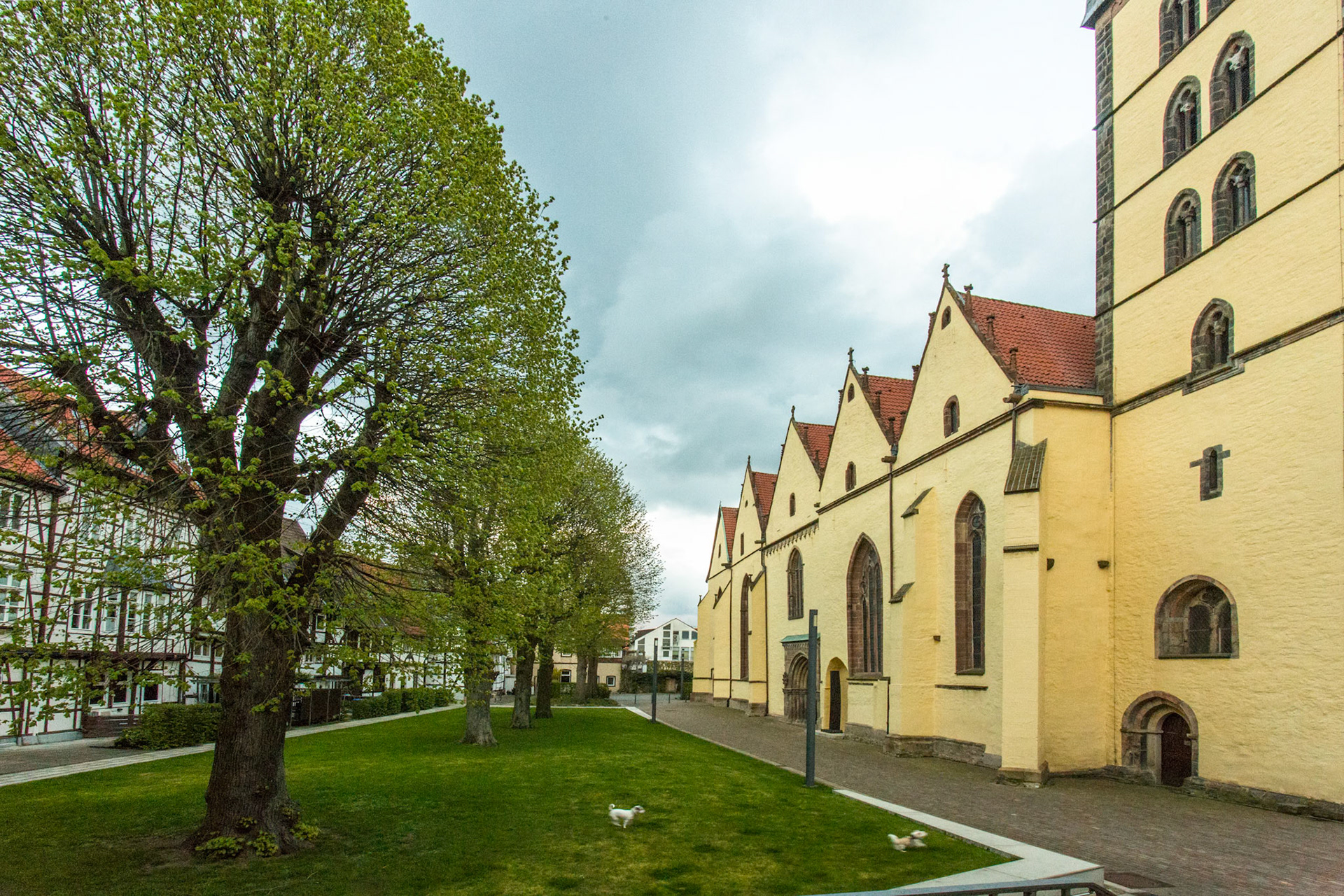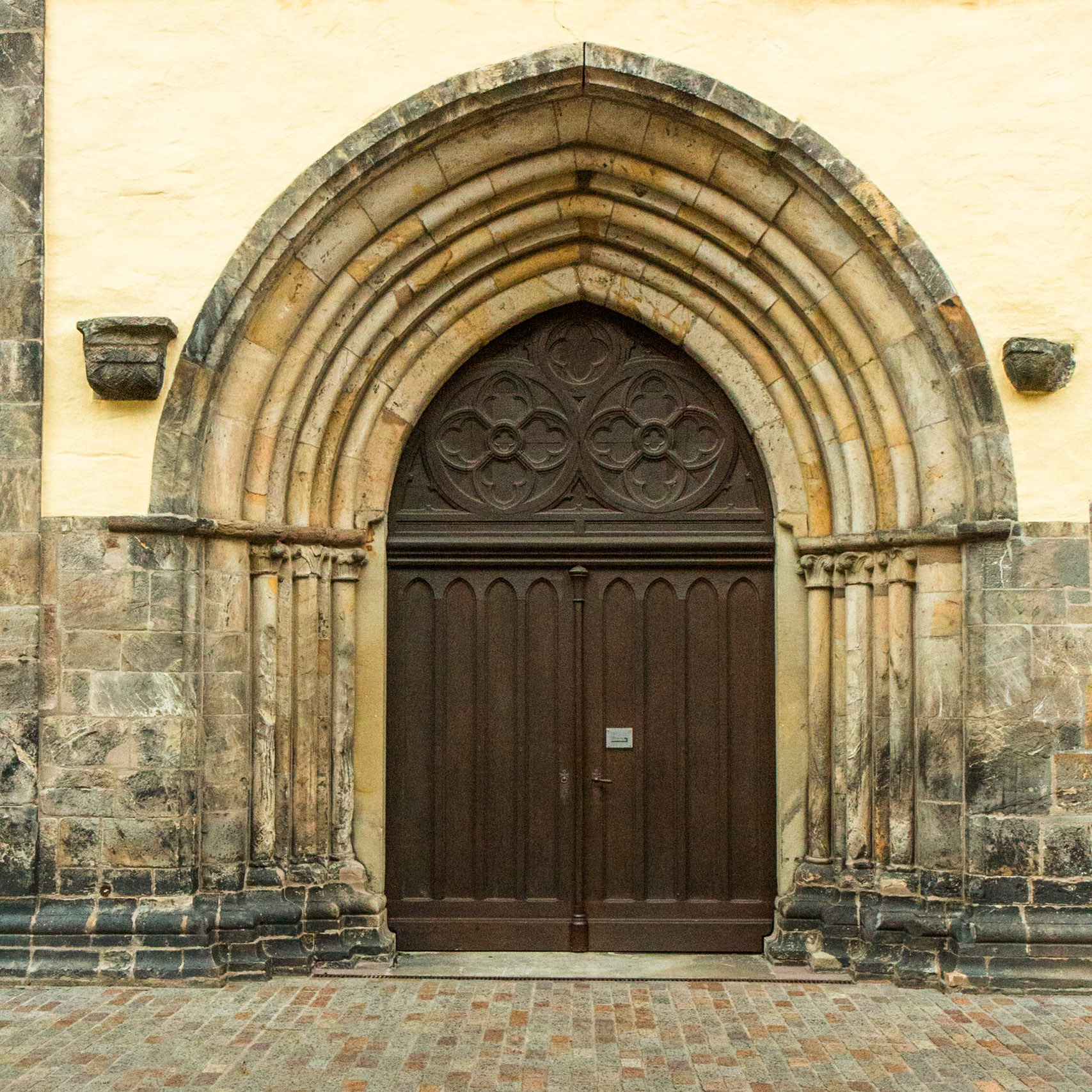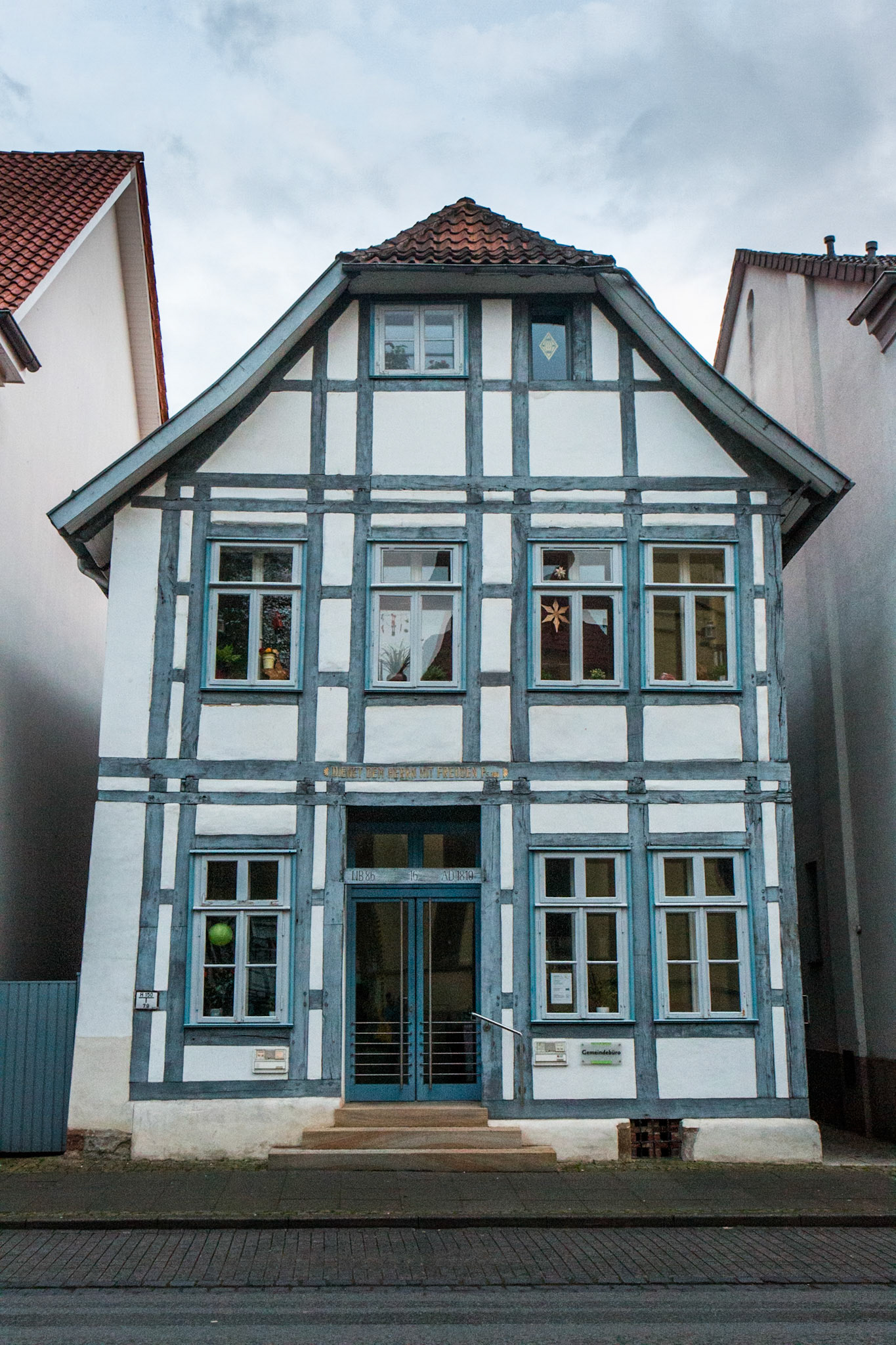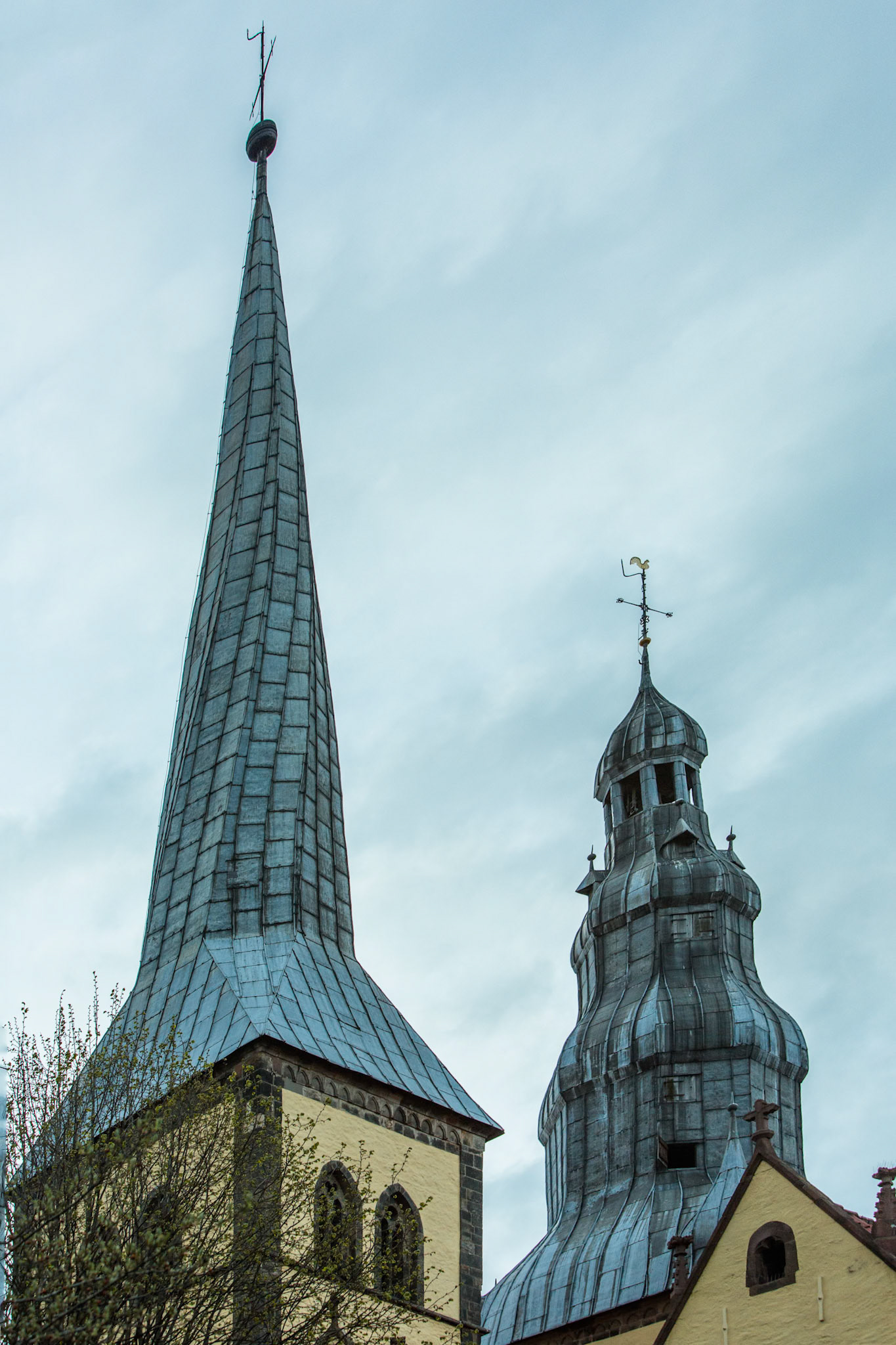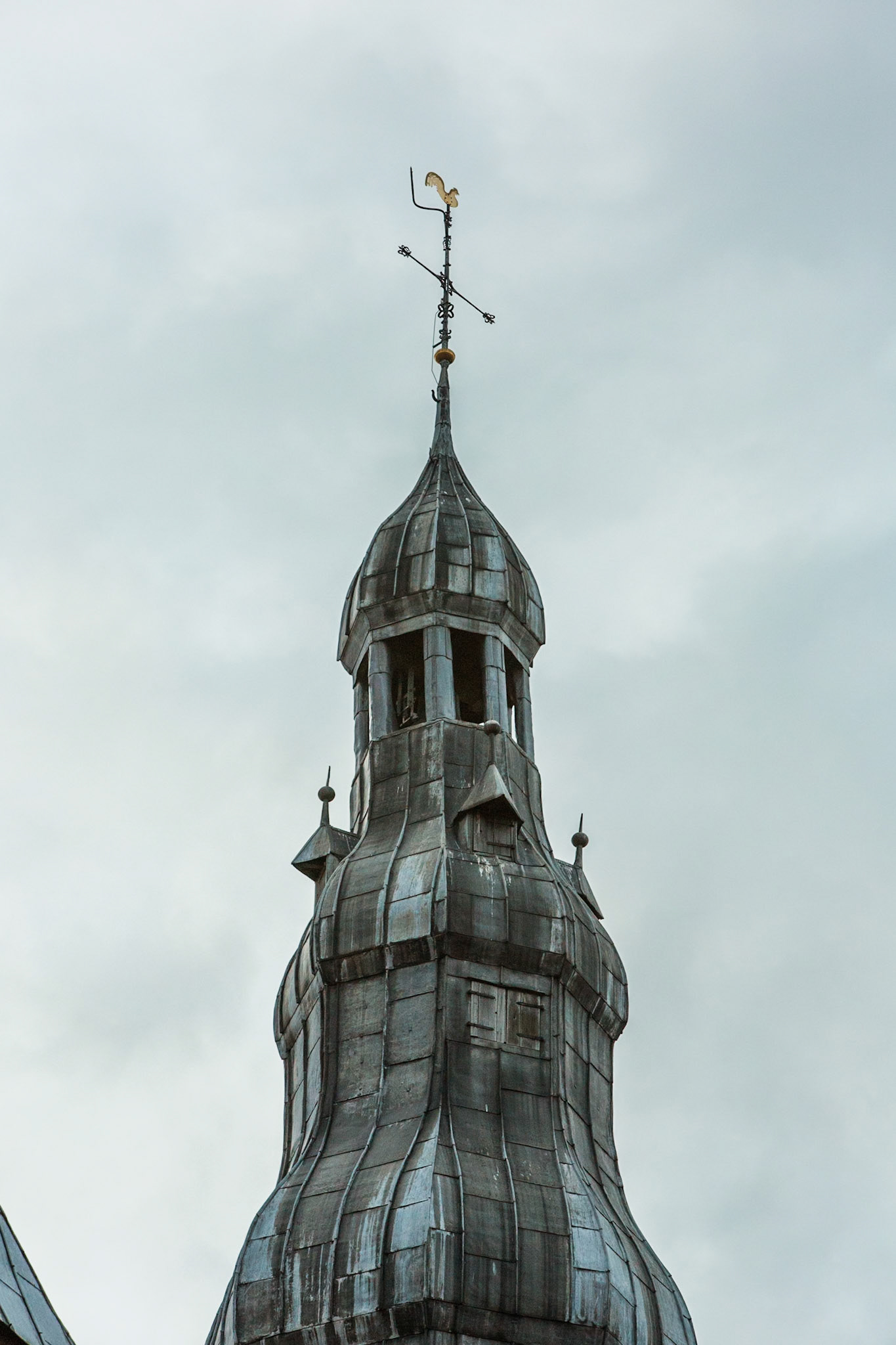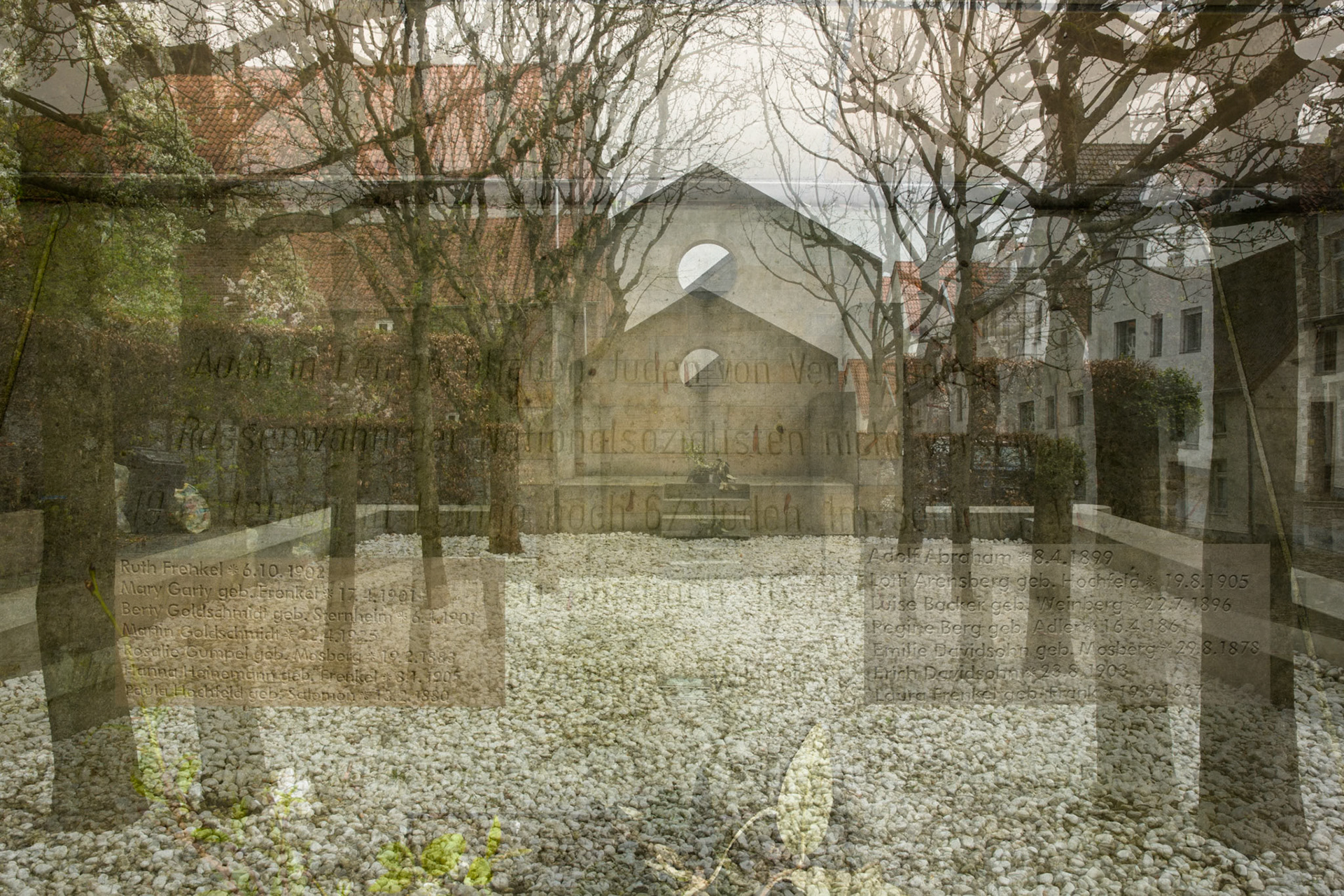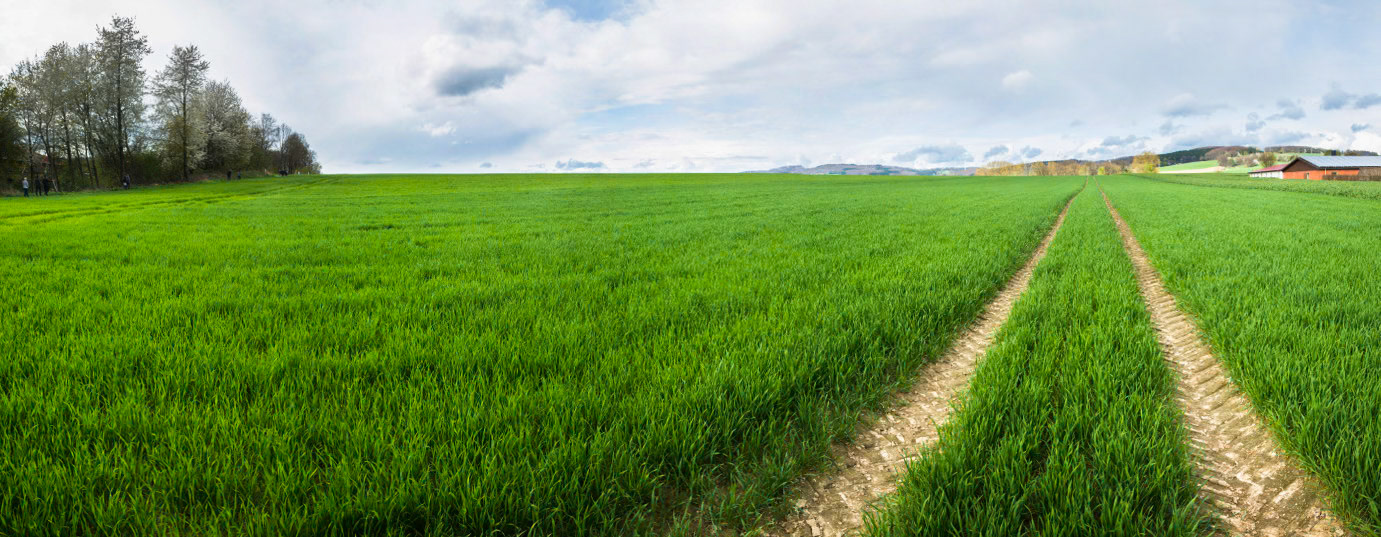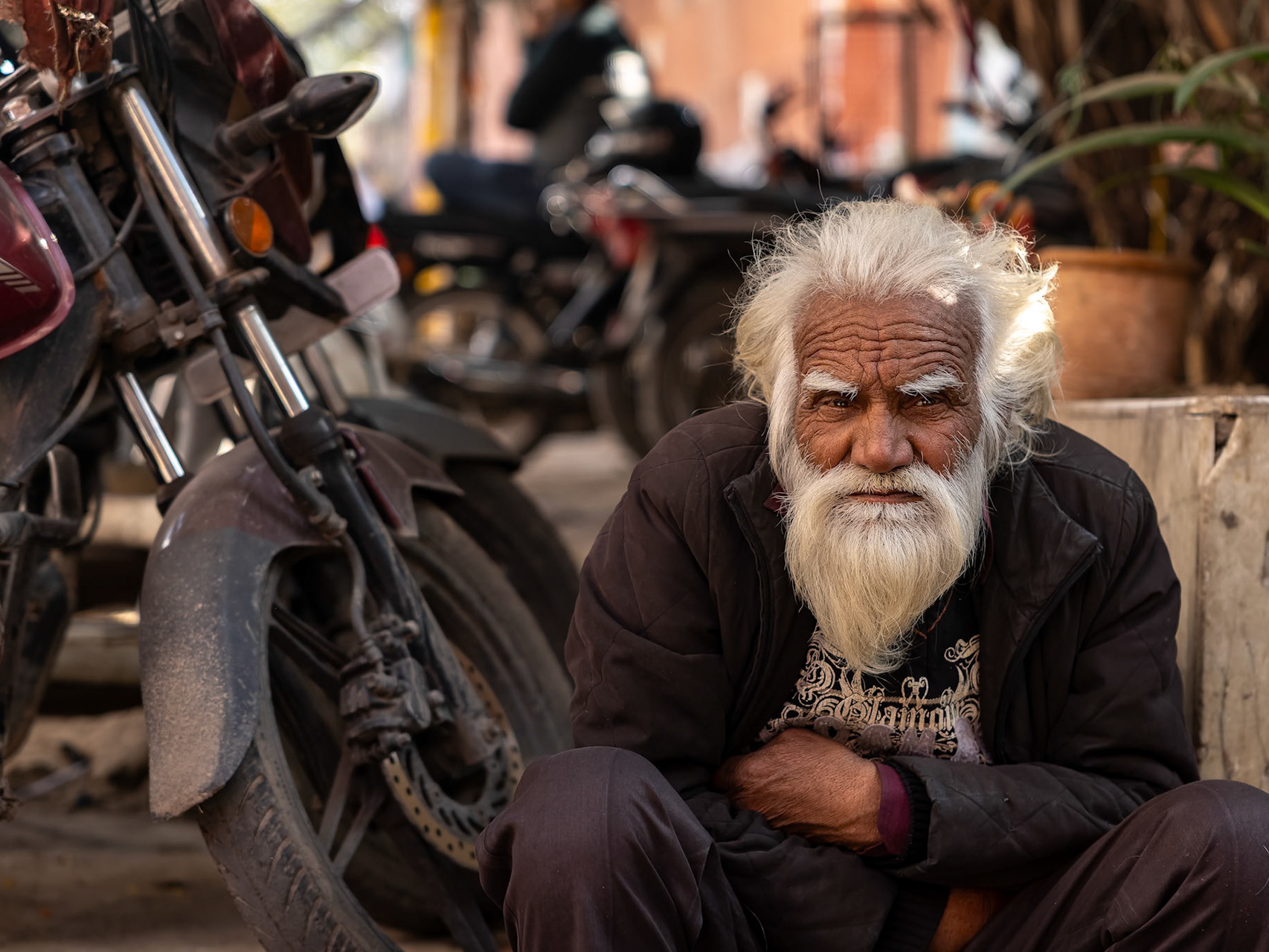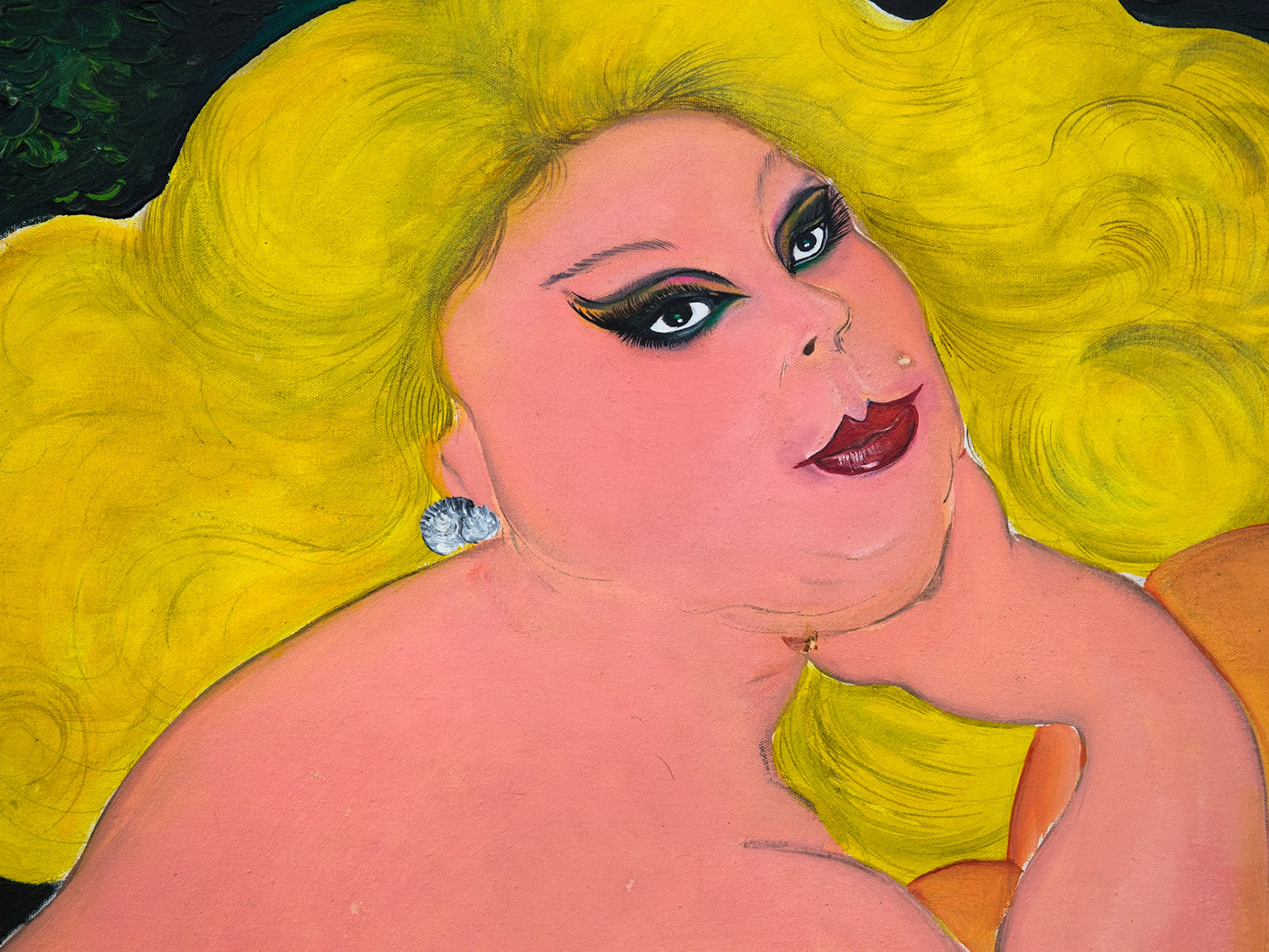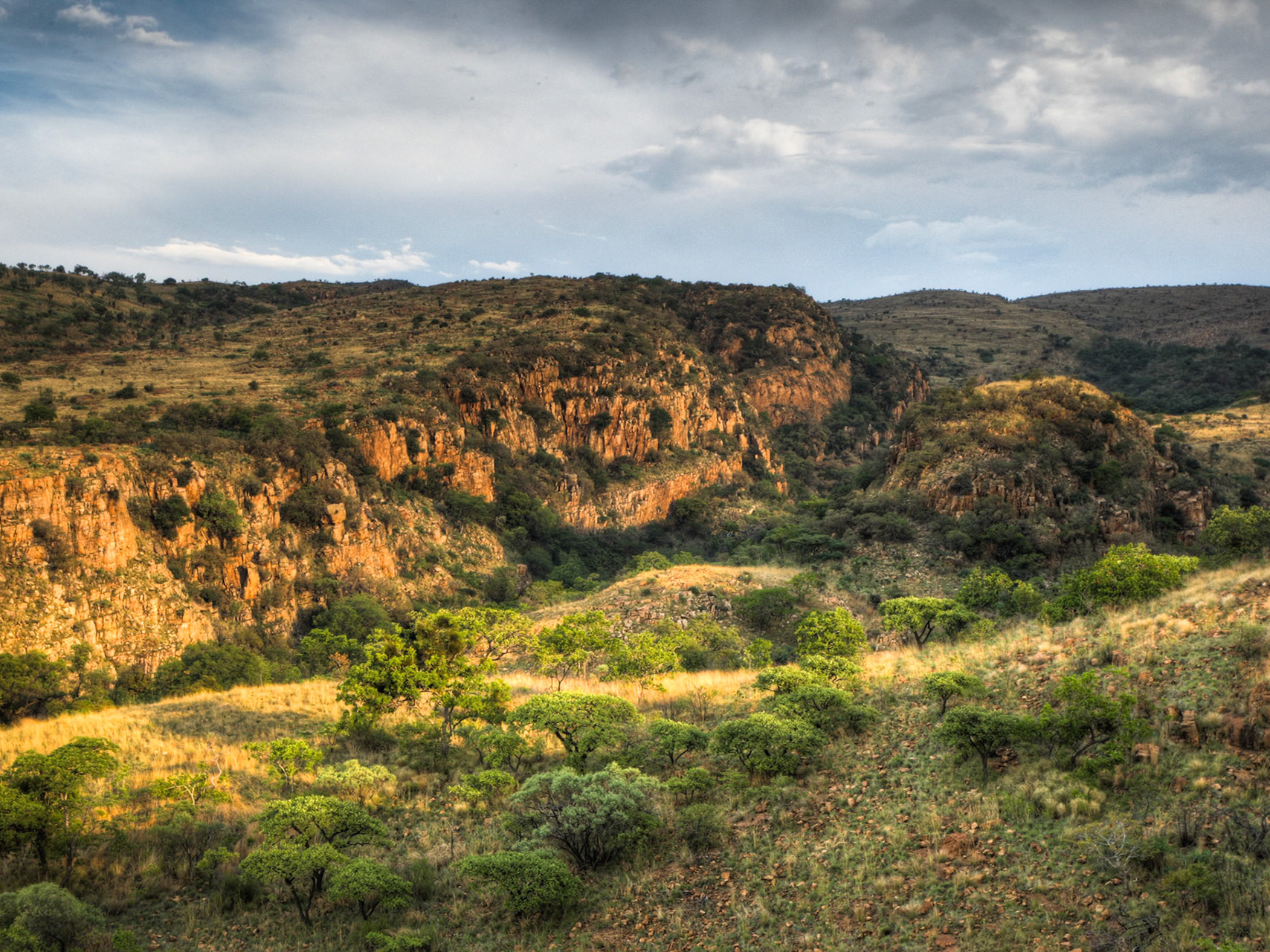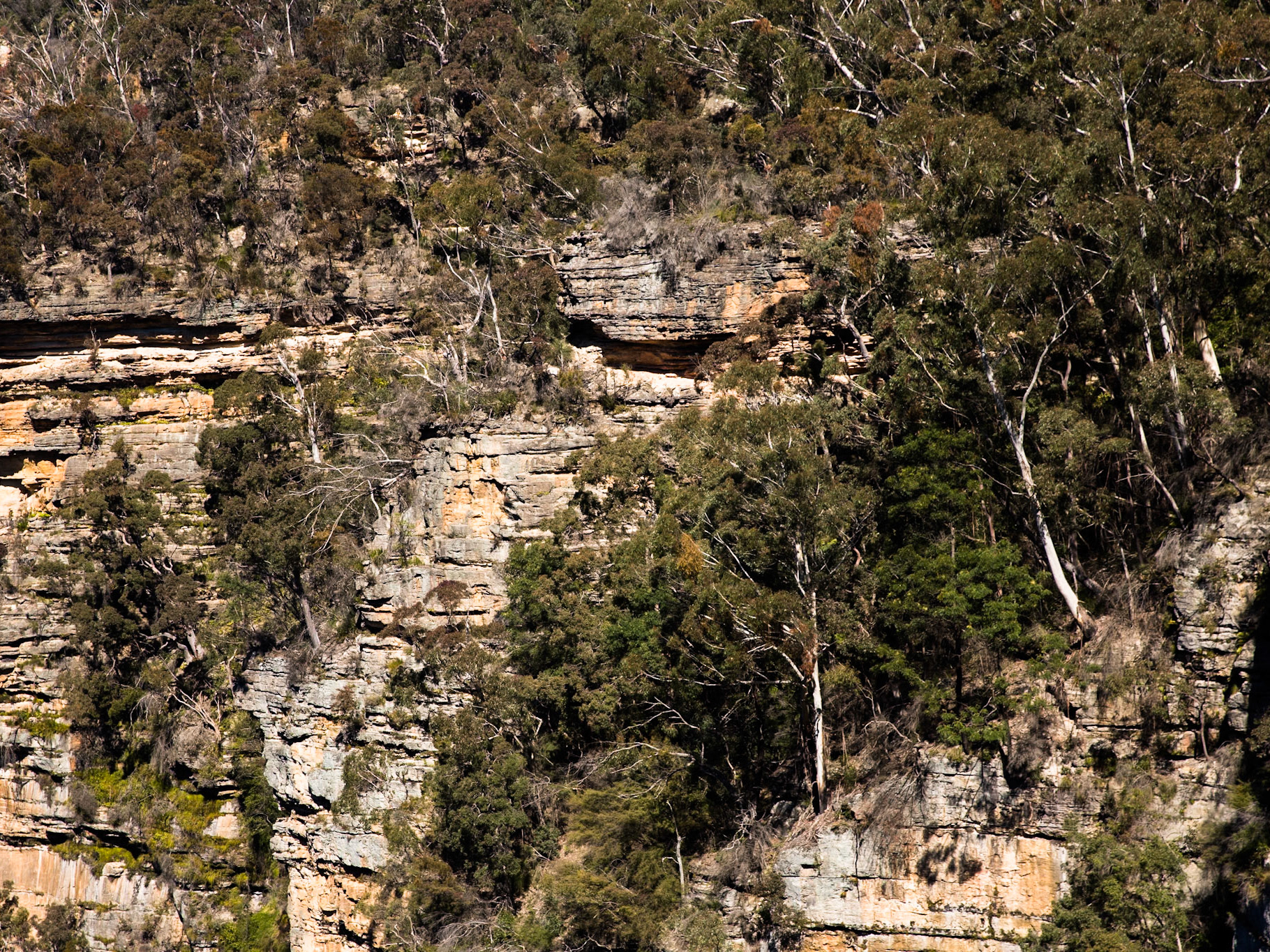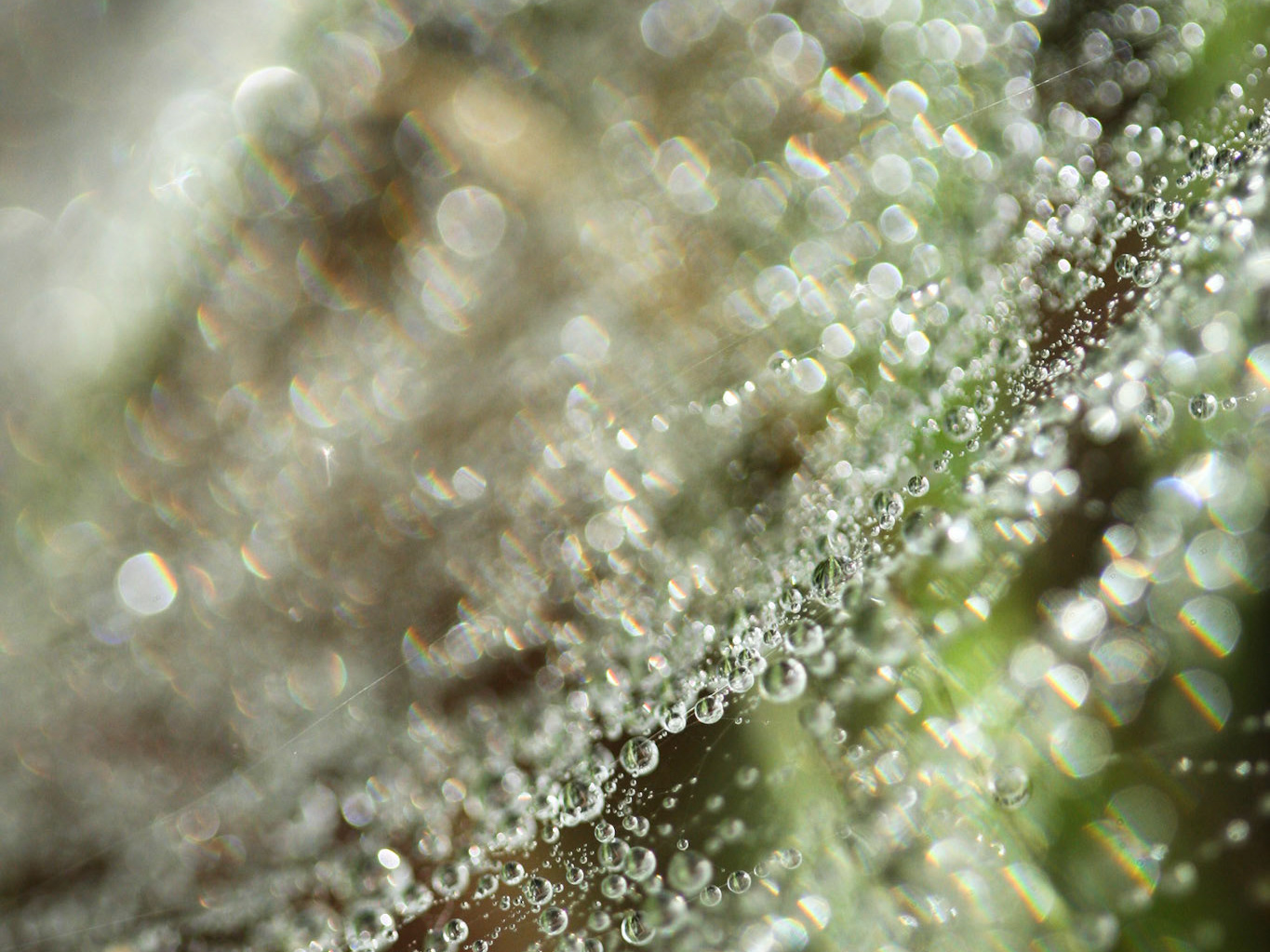
St Nicholas' Church, Lemgo. Originally laid out in 1190. llustrates the transition from Romanesque to Gothic. Most of the interior is from the 16th century. My father was haunted by the sounds of the bells when he returned to Lemgo after the war.

Map dated 1807, showing Das Hohe Feld and a photo of the Hochfeld home in Bega, near Lemgo. Schimshon Bega was born in 1730 (Samson ben Isaac) and his son Isaac ben Samson lived in Bega before moving to Lemgo and acquiring the surname Hochfeld.

Stoplersteine in memory of my grandmother Paula Hochfeld and my aunt Lotti Arensberg (Hochfeld) outside 114 Mittelstrasse, Lemgo

The Hochfeld family home, 114 Mittelstrasse Lemgo. This building, outfileds and stables were owned by the Hochfeld family from 1887, until a forced sale in 1937. My father, his parents and grandparents lived here.

St Nicholas' Church, Lemgo. Originally laid out in 1190. llustrates the transition from Romanesque to Gothic. Most of the interior is from the 16th century. My father was haunted by the sounds of the bells when he returned to Lemgo after the war.

The first Jewish presence in Lemgo is recorded as the 14th century. The synogogue in Neuestrasse was established in 1883. On Krystalnacht on 10 November 1938 the synagogue was set on fire and destroyed. Two signs commemorate the event, one refers to the acts of the national socialists (the Nazis), the other to the German people, a subtle but significant shift in emphasis and responsibility. The names of my grandmother Paula Hochfeld (Salamon) and aunt Lotti Arensberg (Hochfeld) are commemorated.

St Nicholas' Church, Lemgo. Originally laid out in 1190. llustrates the transition from Romanesque to Gothic. Most of the interior is from the 16th century.

The old Jewish Cemetery cemetary in Lemgo, Ostertorwall, corner of Shepherd Street, formerly Knochenhauer Wall. Used 1721-early 20th century. During Kristallnacht in 1938, the gravestones in the cemetery were cleared. In spring 1948, the cemetery was restored. My great-grandfather Jacob Hochfeld, his brother Isaac and their respective wives Henriette and Sophie, my grandfather Sigmund and other Hochfelds are buried here. My grandmother Paula is commemorated on Jacob's tombstone.

Schlosscheune in Wendlingshausen, near Lemgo. The owner is a von Reden, a descendent of an original partner in the Lippische Thonwarenfabrik in Dörentrup and known locally as "das Judenwerk, a business founded by Isaac Hochfeld and his brother-in-law Max Lenzberg.

Schlosscheune in Wendlingshausen, near Lemgo. The owner is a von Reden, a descendent of an original partner in the Lippische Thonwarenfabrik in Dörentrup and known locally as "das Judenwerk, a business founded by Isaac Hochfeld and his brother-in-law Max Lenzberg.

Das Hohe Feld, in an area Gemeinderhaus in Bega, now an open field on a hill that is no doubt the origin of our surname. Schimshon Bega (Samson ben Isaac) and his son Isaac ben Samson lived in Bega before moving to Lemgo and acquiring the surname Hochfeld.

Das Hohe Feld, in an area Gemeinderhaus in Bega, now an open field on a hill that is no doubt the origin of our surname. Schimshon Bega (Samson ben Isaac) and his son Isaac ben Samson lived in Bega before moving to Lemgo and acquiring the surname Hochfeld.

Military cemetary in Bega, Barntruper strasse. The entries for the First World War included a number of Jews, obviously absent for the Second World War memorial. Casualties start rocketing in 1942/43 (Stalingrad) and continue increasing until the end of the war.

The Hochfeld family home, 114 Mittelstrasse Lemgo. This building, outfileds and stables were owned by the Hochfeld family from 1887, until a forced sale in 1937. My father, his parents and grandparents lived here.

St Nicholas' Church, Lemgo. Originally laid out in 1190. llustrates the transition from Romanesque to Gothic. Most of the interior is from the 16th century. My father was haunted by the sounds of the bells when he returned to Lemgo after the war.

St Nicholas' Church, Lemgo. Originally laid out in 1190. llustrates the transition from Romanesque to Gothic. Most of the interior is from the 16th century. My father was haunted by the sounds of the bells when he returned to Lemgo after the war.

Kanzlerbrunnen, Chancellor Fountain, Lemgo. Built to commemorate the beer wars in the 17th century following the introduction of a drinking tax. Adorned with a beer barrel and drinking faces. By Bonnifatius Stirnberg 1977.

Kanzlerbrunnen, Chancellor Fountain, Lemgo. Built to commemorate the beer wars in the 17th century following the introduction of a drinking tax. Adorned with a beer barrel and drinking faces. By Bonnifatius Stirnberg 1977.

Kanzlerbrunnen, Chancellor Fountain, Lemgo. Built to commemorate the beer wars in the 17th century following the introduction of a drinking tax. Adorned with a beer barrel and drinking faces. By Bonnifatius Stirnberg 1977.

Mittelstrasse, Lemgo

Blossoms, Lemgo

Blossoms, Lemgo

Blossoms, Lemgo

The Hochfeld family home, 114 Mittelstrasse Lemgo. This building, outfileds and stables were owned by the Hochfeld family from 1887, until a forced sale in 1937. My father, his parents and grandparents lived here.

The Hochfeld family home, 114 Mittelstrasse Lemgo. This building, outfileds and stables were owned by the Hochfeld family from 1887, until a forced sale in 1937. My father, his parents and grandparents lived here.

Engelbert-Kampfer Gymansium, school, Lemgo

Easter eggs, Lemgo

St Nicholas' Church, Lemgo. Originally laid out in 1190. llustrates the transition from Romanesque to Gothic. Most of the interior is from the 16th century. My father was haunted by the sounds of the bells when he returned to Lemgo after the war.

A building on Marktplatz, Lemgo

St Nicholas' Church, Lemgo. Originally laid out in 1190. llustrates the transition from Romanesque to Gothic. Most of the interior is from the 16th century. My father was haunted by the sounds of the bells when he returned to Lemgo after the war.

St Nicholas' Church, Lemgo. Originally laid out in 1190. llustrates the transition from Romanesque to Gothic. Most of the interior is from the 16th century. My father was haunted by the sounds of the bells when he returned to Lemgo after the war.

St Nicholas' Church, Lemgo. Originally laid out in 1190. llustrates the transition from Romanesque to Gothic. Most of the interior is from the 16th century. My father was haunted by the sounds of the bells when he returned to Lemgo after the war.

St Nicholas' Church, Lemgo. Originally laid out in 1190. llustrates the transition from Romanesque to Gothic. Most of the interior is from the 16th century. My father was haunted by the sounds of the bells when he returned to Lemgo after the war.

St Nicholas' Church, Lemgo. Originally laid out in 1190. llustrates the transition from Romanesque to Gothic. Most of the interior is from the 16th century.

St Nicholas' Church, Lemgo. Originally laid out in 1190. llustrates the transition from Romanesque to Gothic. Most of the interior is from the 16th century. My father was haunted by the sounds of the bells when he returned to Lemgo after the war.

St Nicholas' Church, Lemgo. Originally laid out in 1190. llustrates the transition from Romanesque to Gothic. Most of the interior is from the 16th century. My father was haunted by the sounds of the bells when he returned to Lemgo after the war.

The first Jewish presence in Lemgo is recorded as the 14th century. The synogogue in Neuestrasse was established in 1883. On Krystalnacht on 10 November 1938 the synagogue was set on fire and destroyed. Two signs commemorate the event, one refers to the acts of the national socialists (the Nazis), the other to the German people, a subtle but significant shift in emphasis and responsibility. The names of my grandmother Paula Hochfeld (Salamon) and aunt Lotti Arensberg (Hochfeld) are commemorated.

Das Hohe Feld, in an area Gemeinderhaus in Bega, now an open field on a hill that is no doubt the origin of our surname. Schimshon Bega (Samson ben Isaac) and his son Isaac ben Samson lived in Bega before moving to Lemgo and acquiring the surname Hochfeld.
